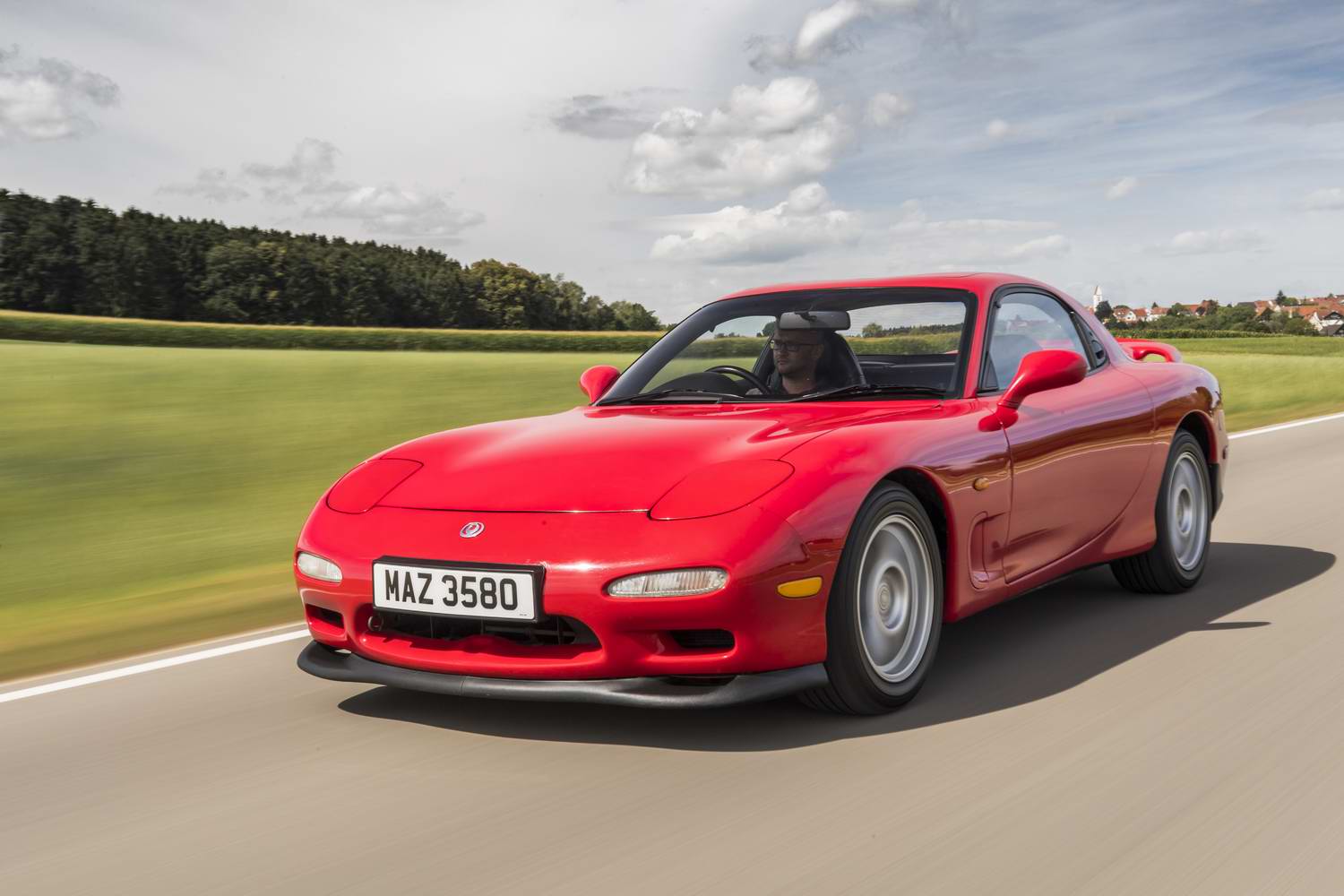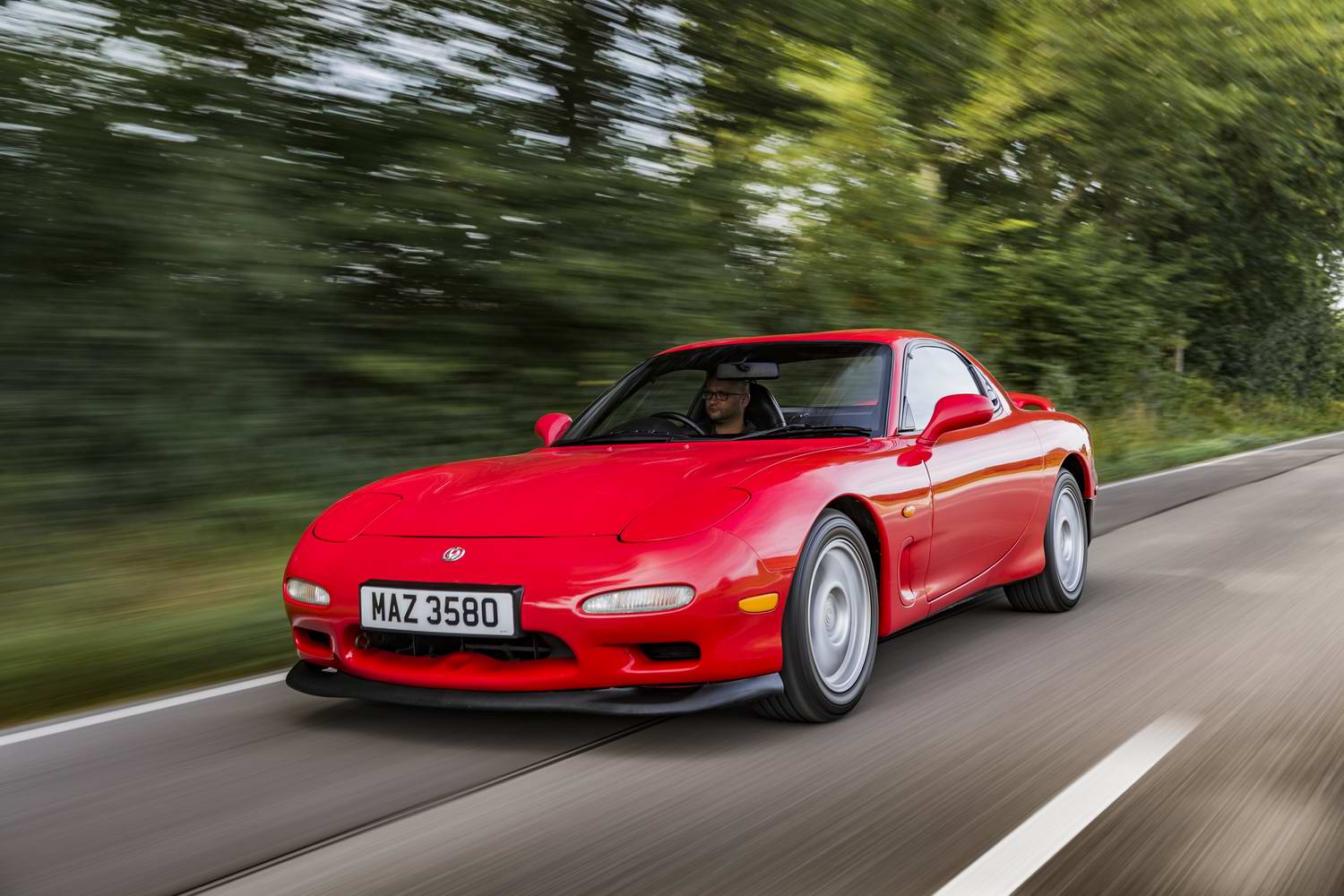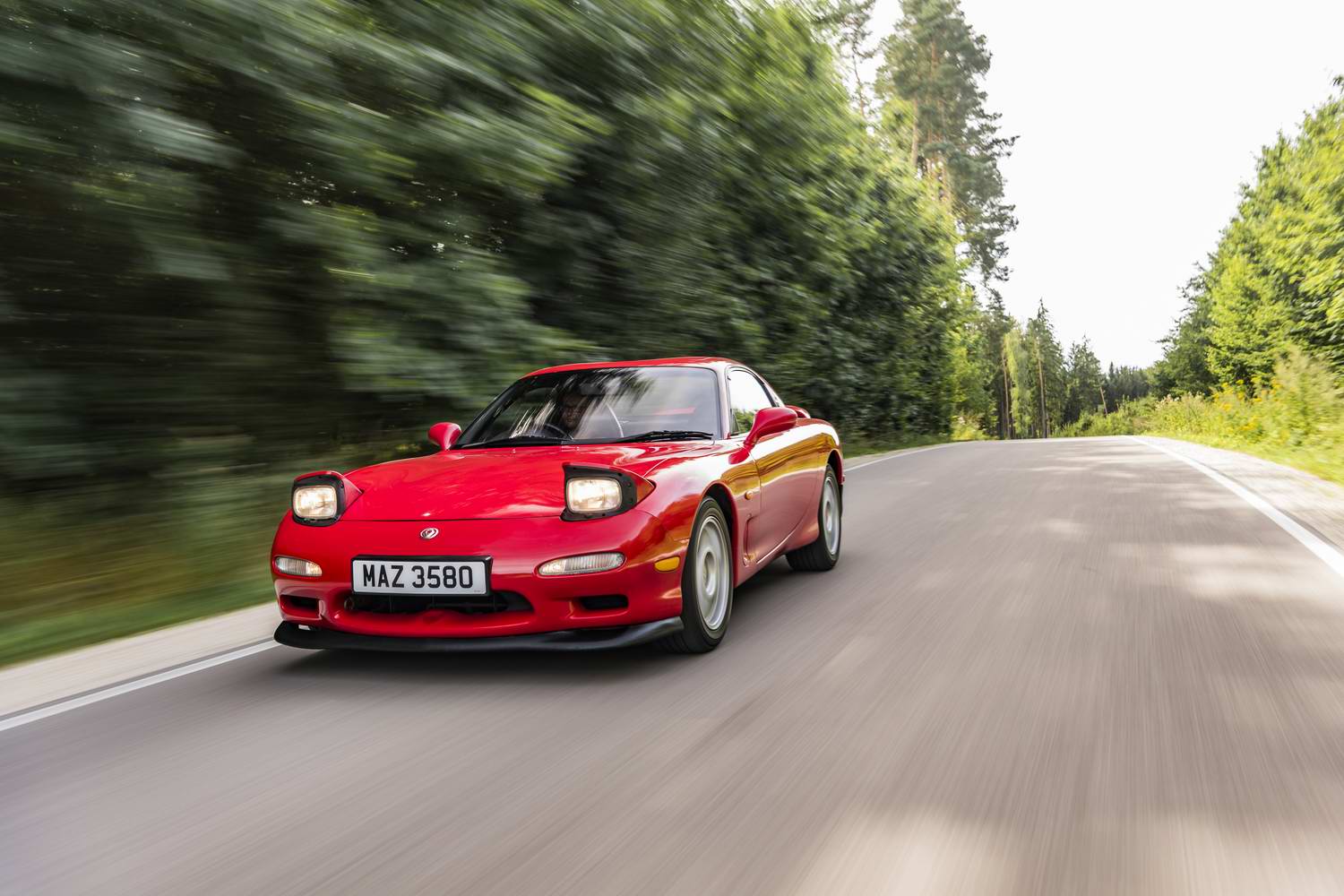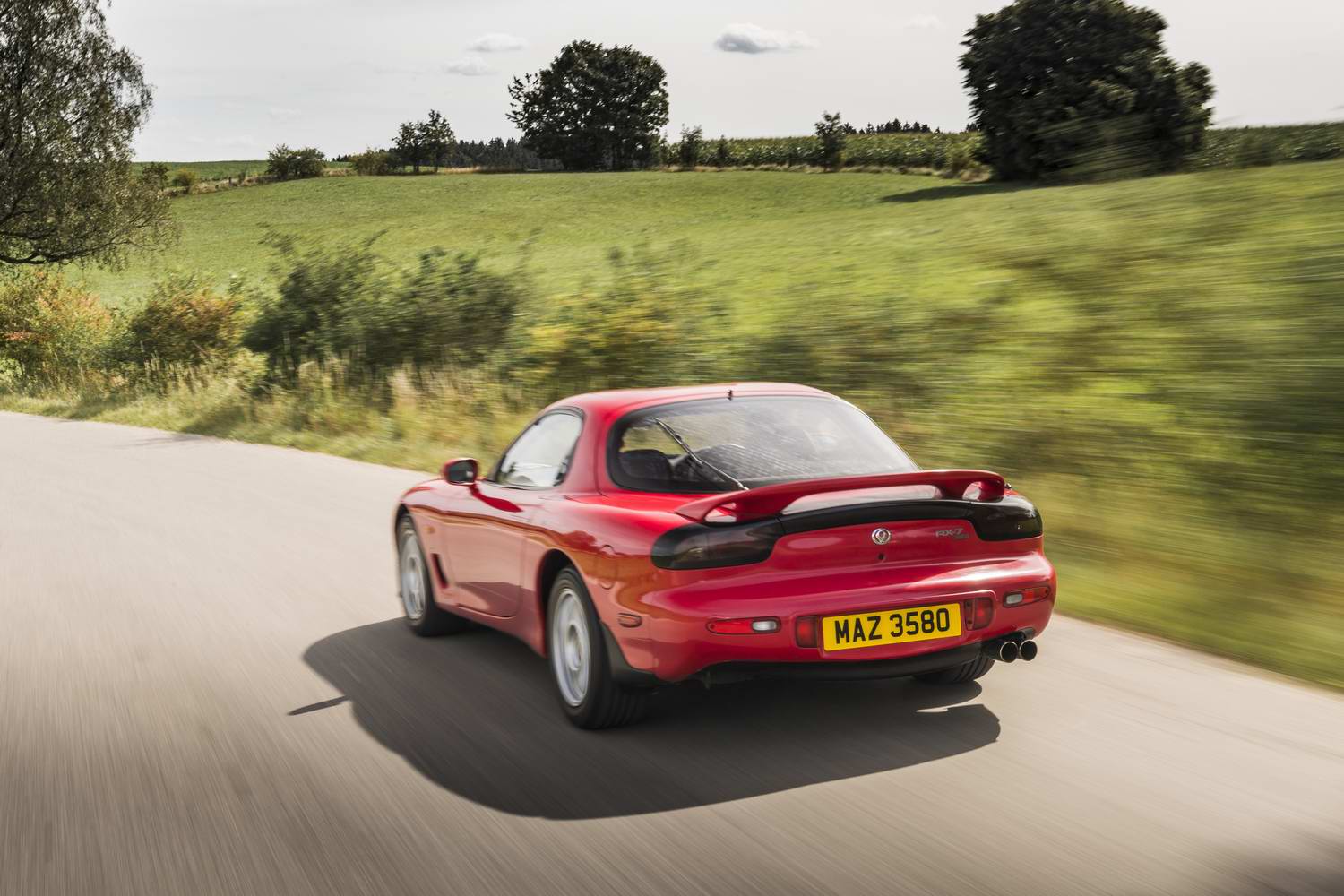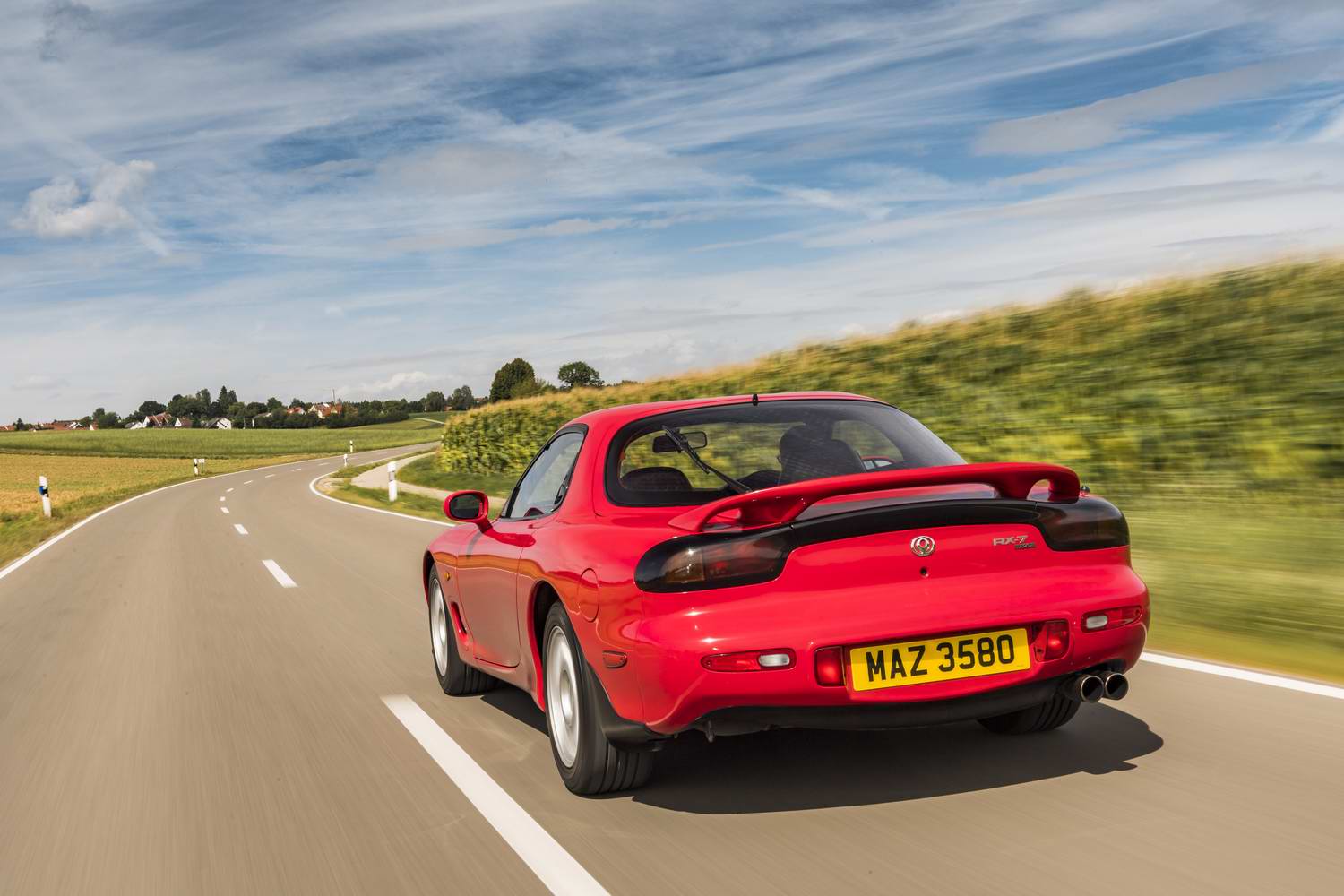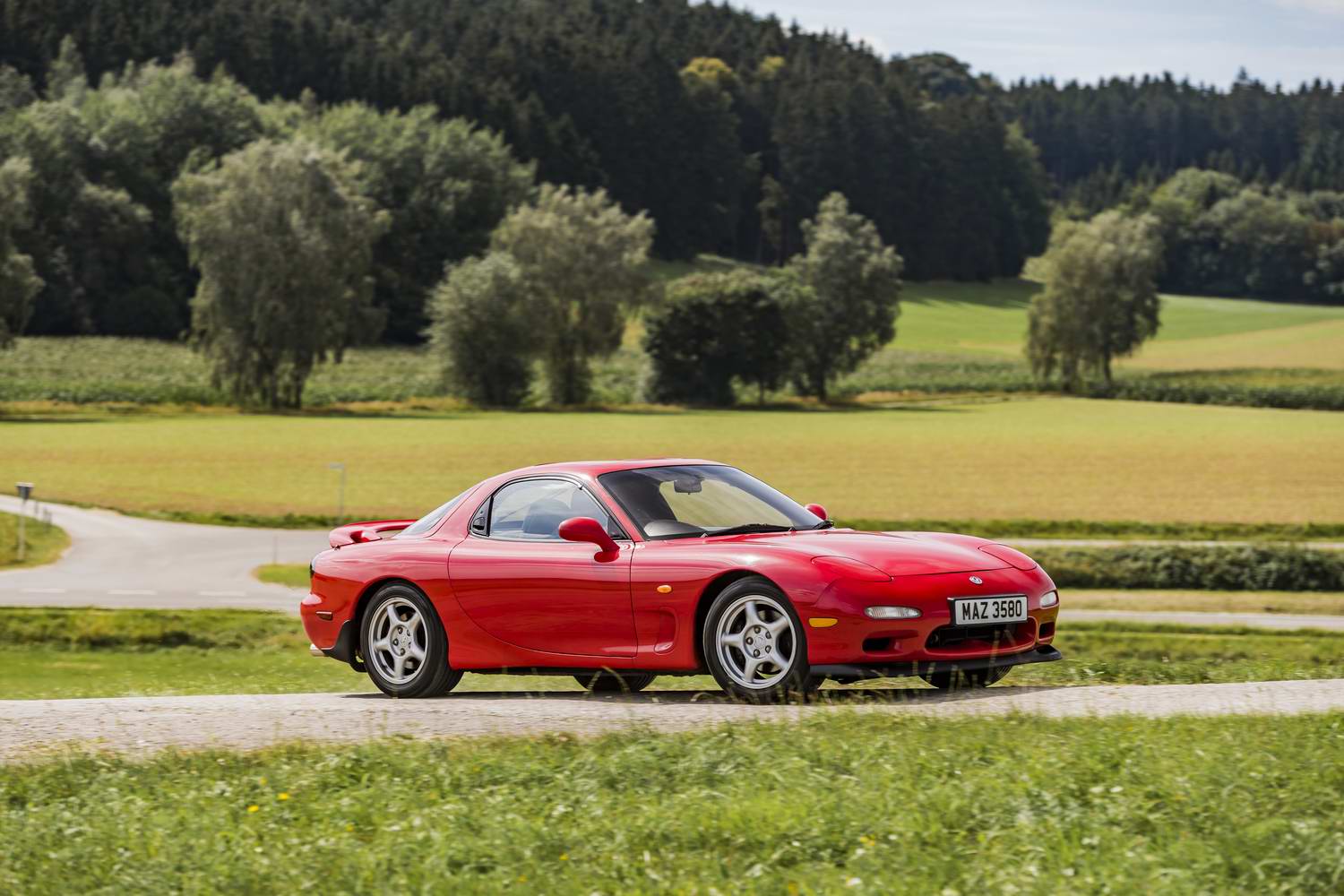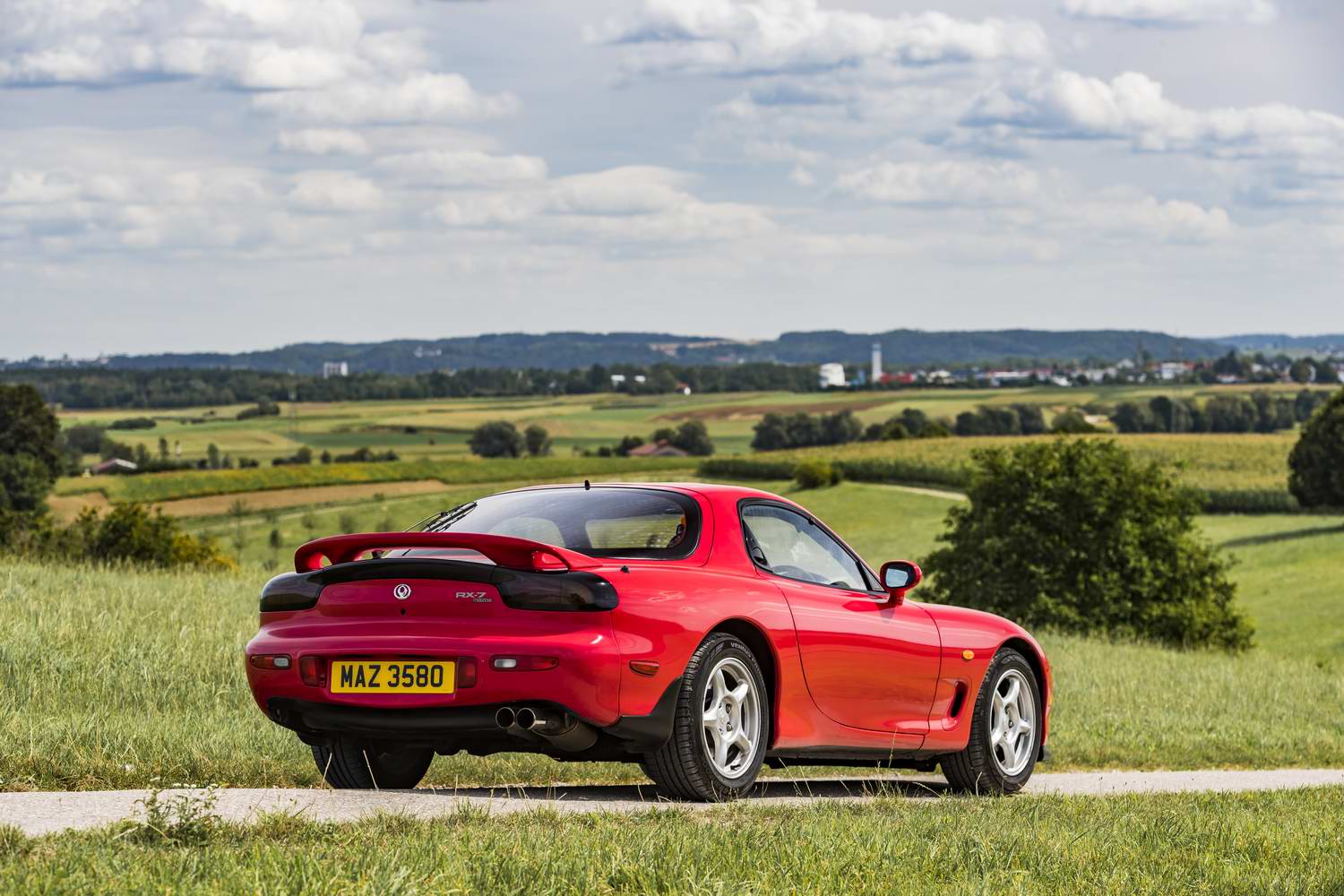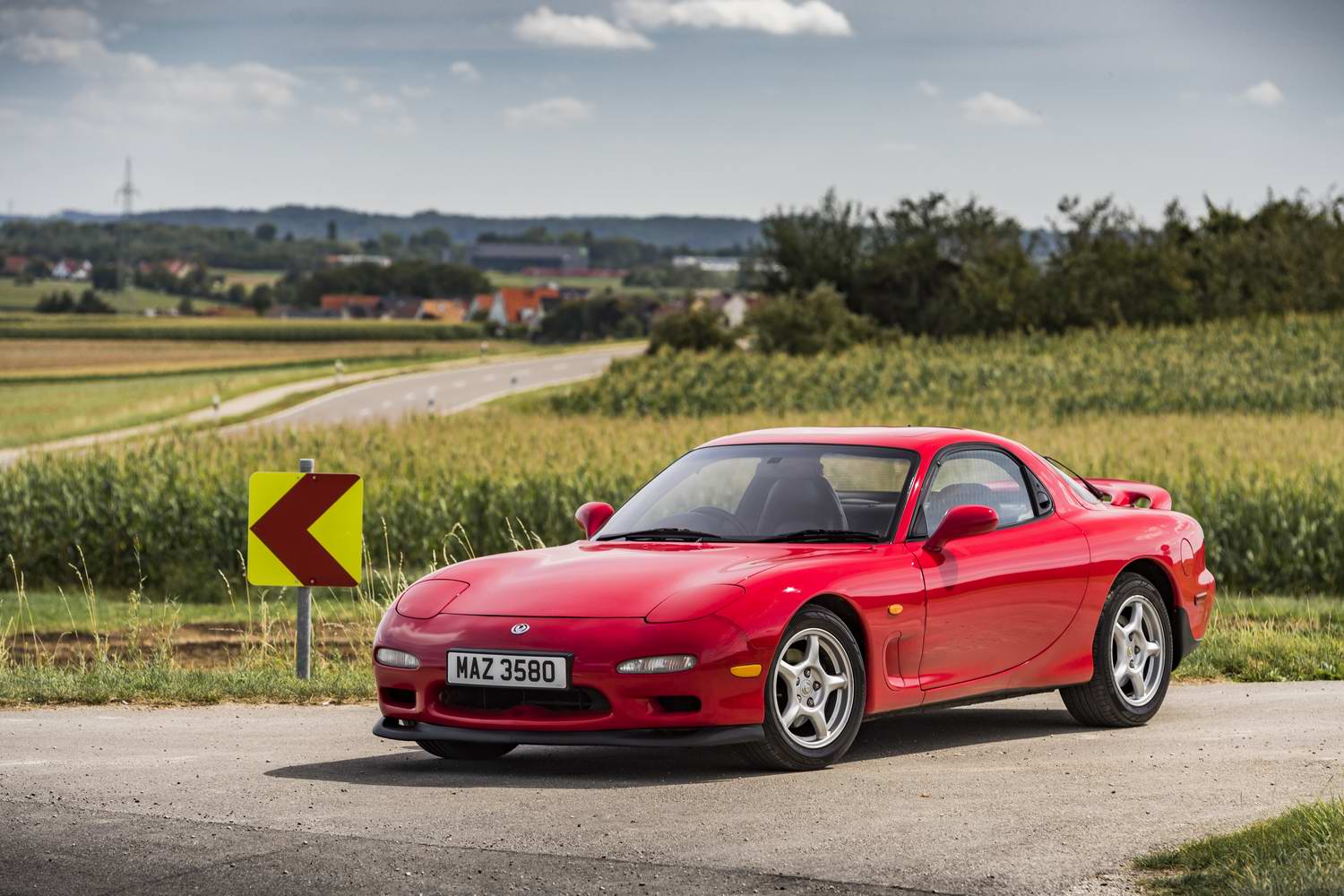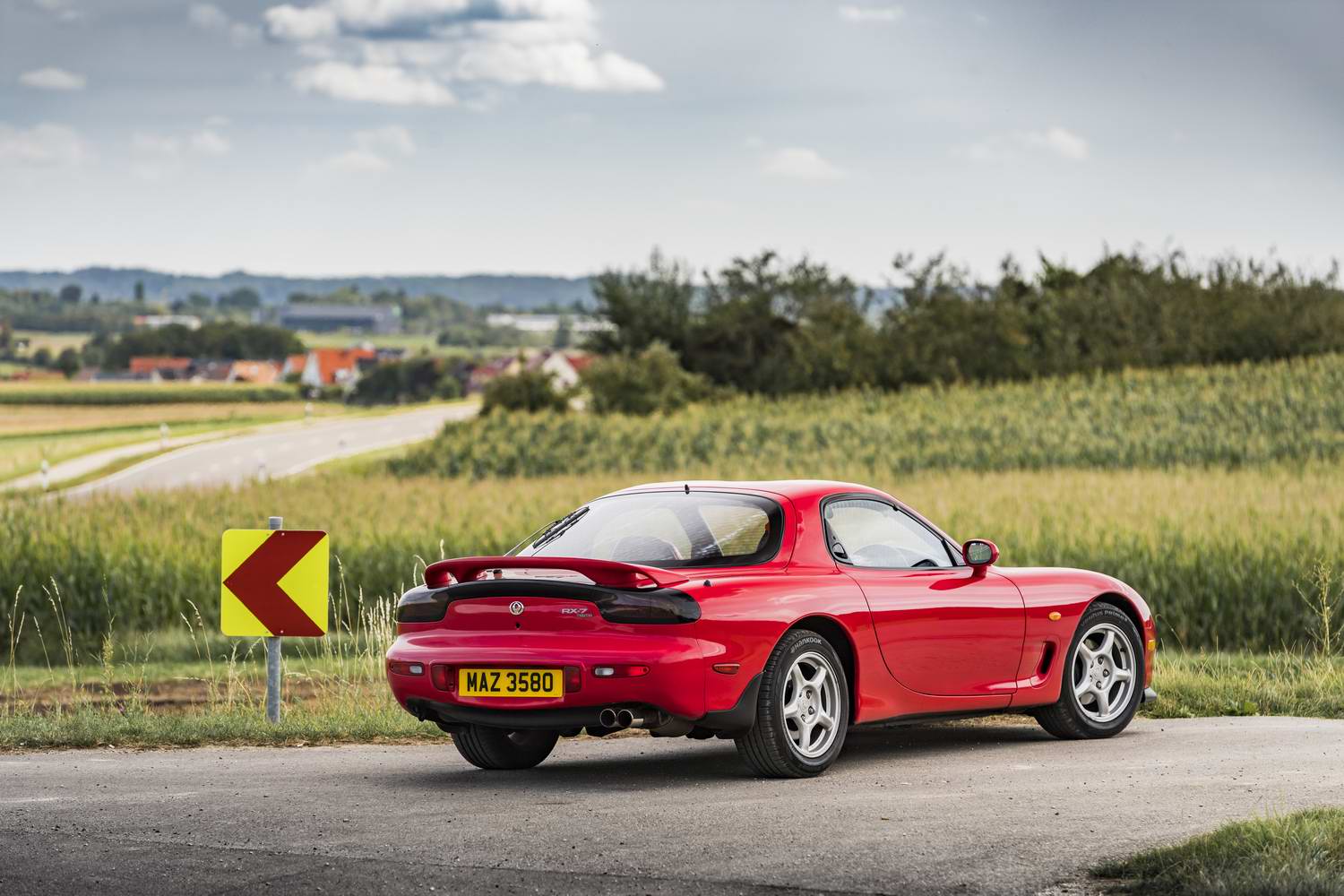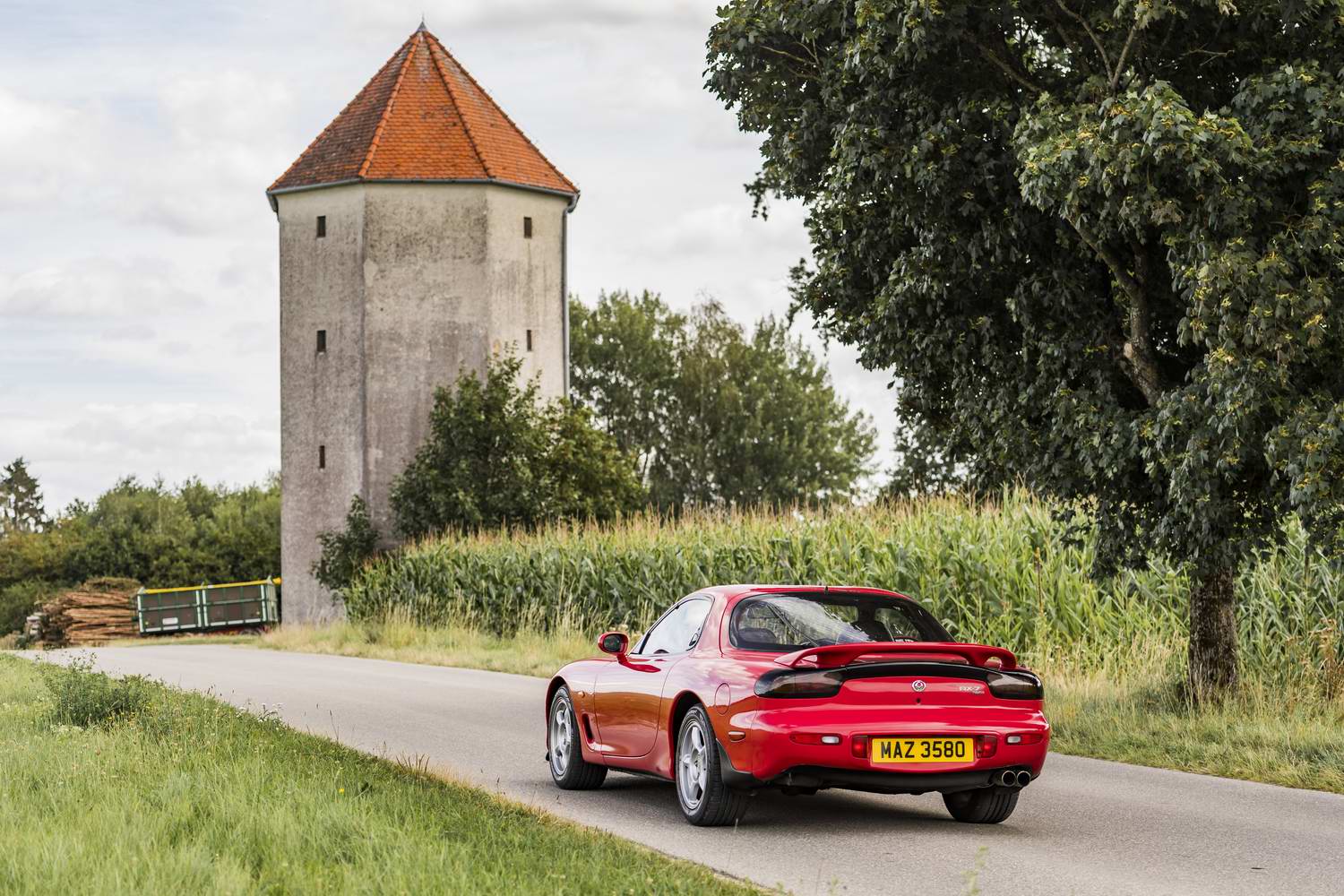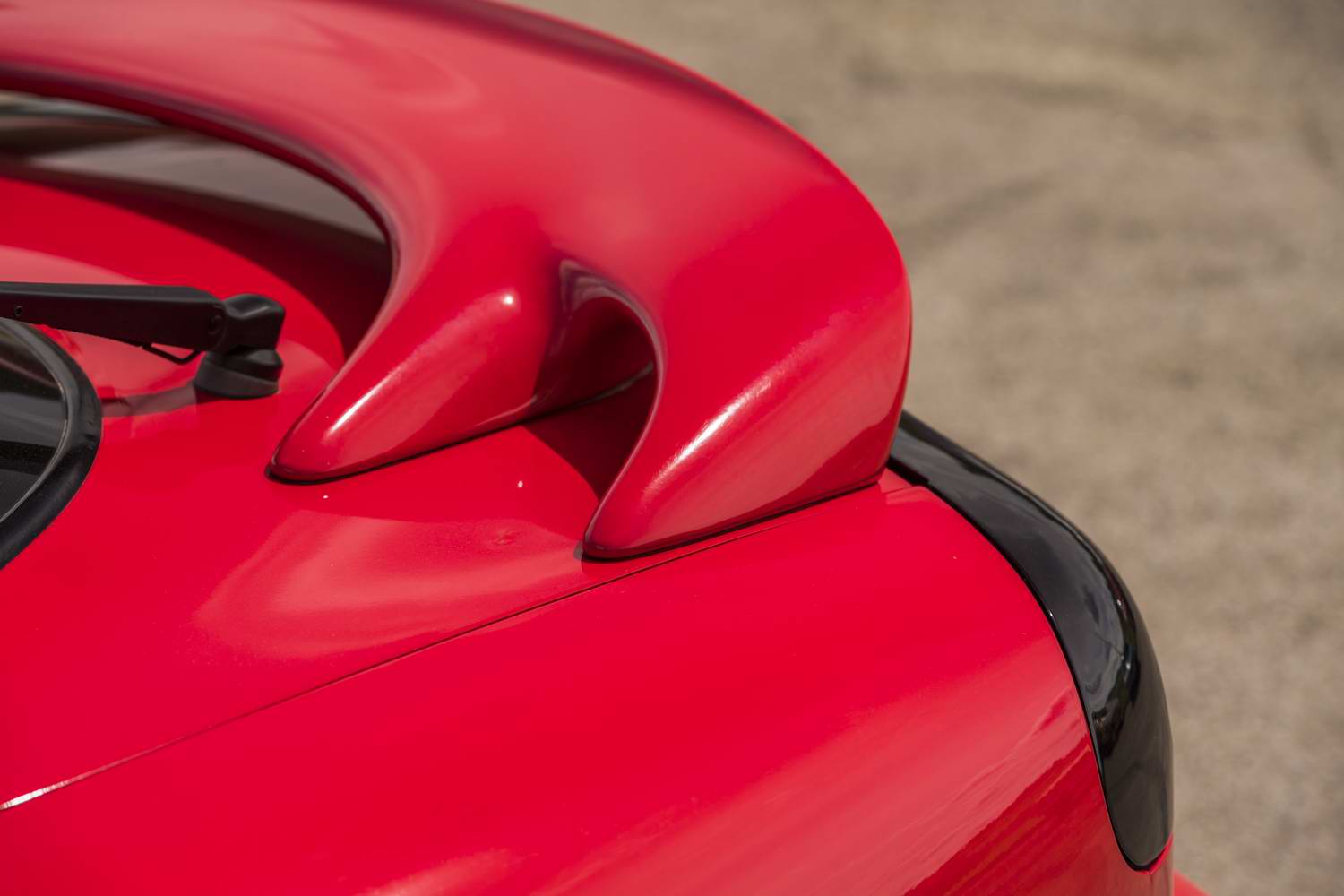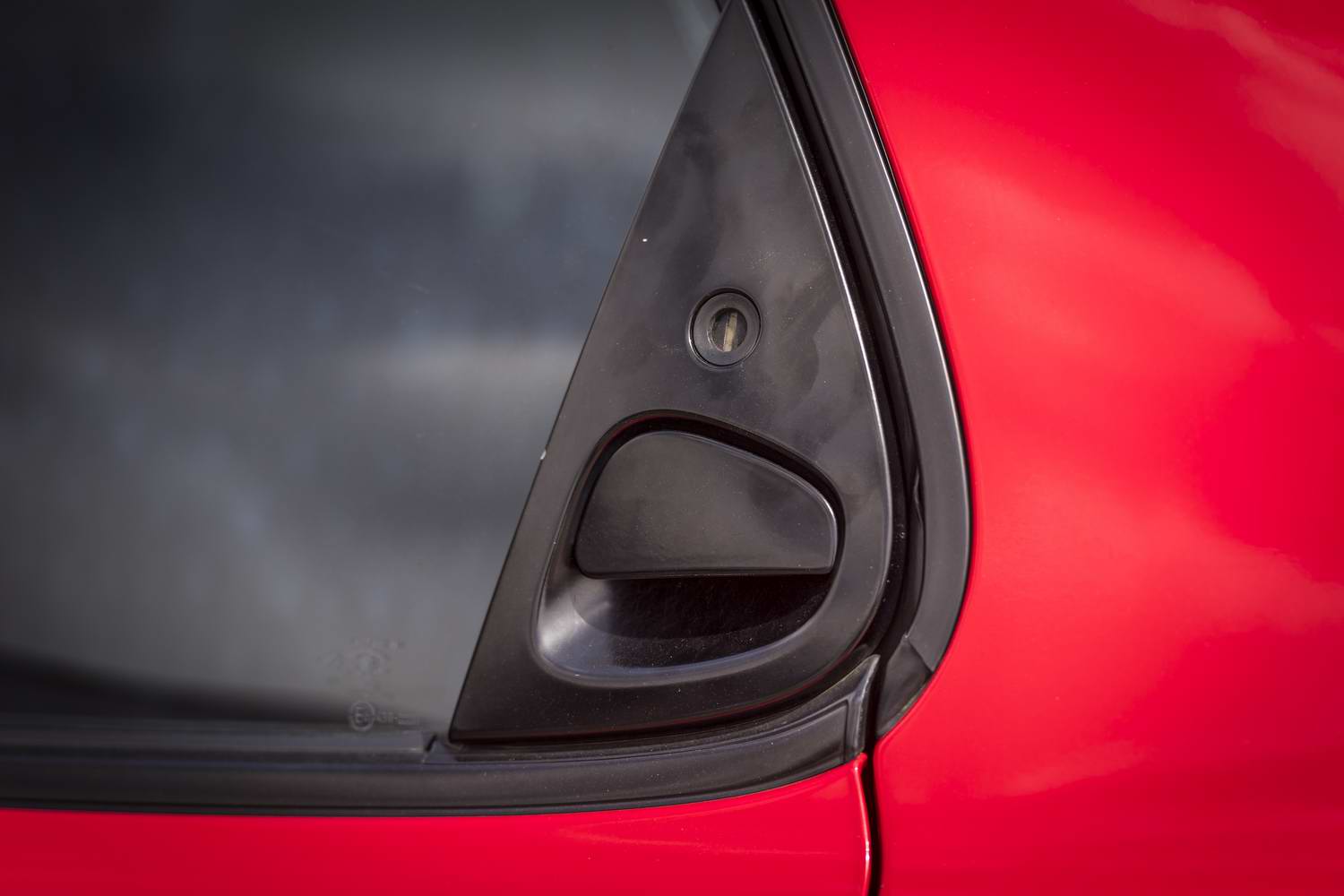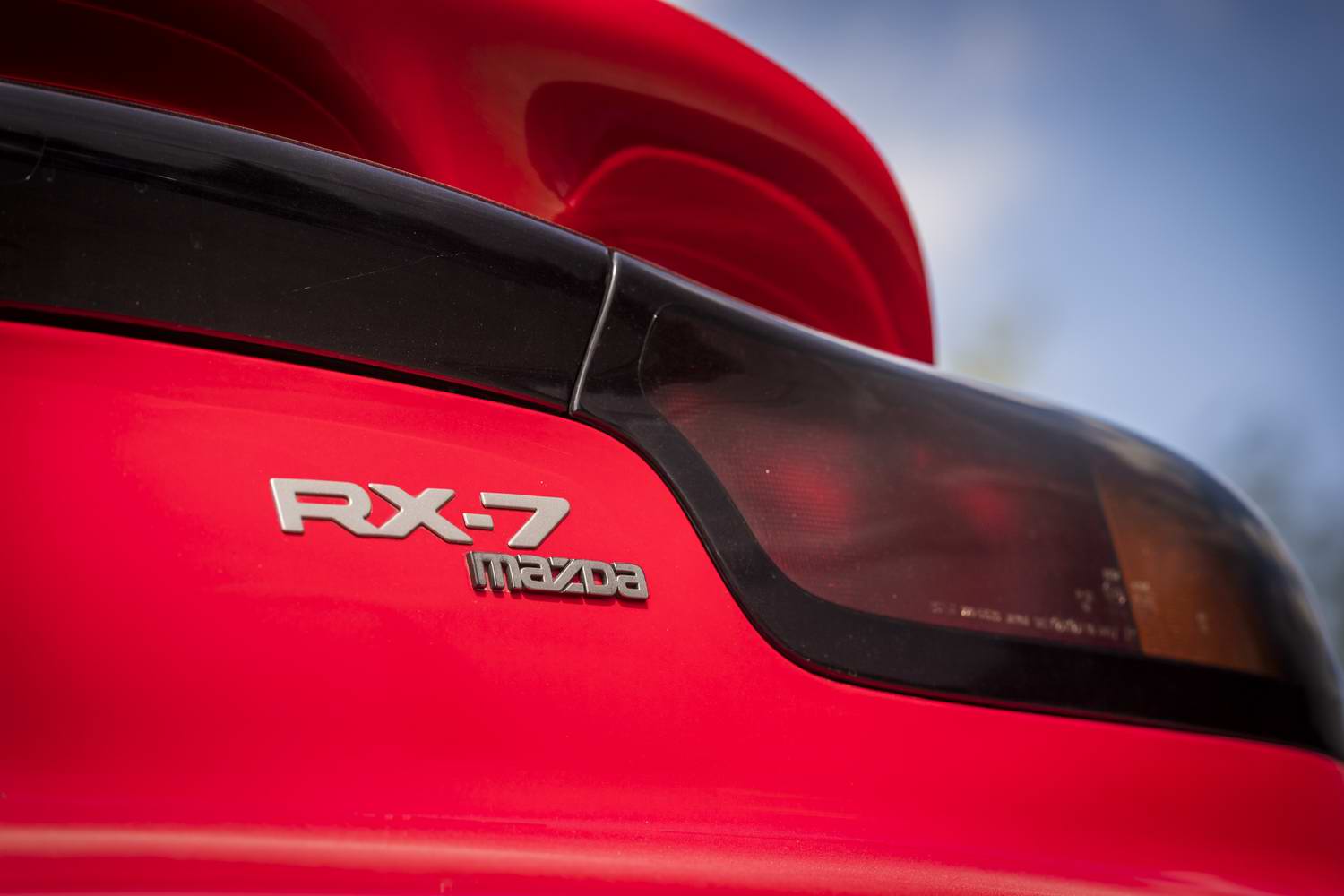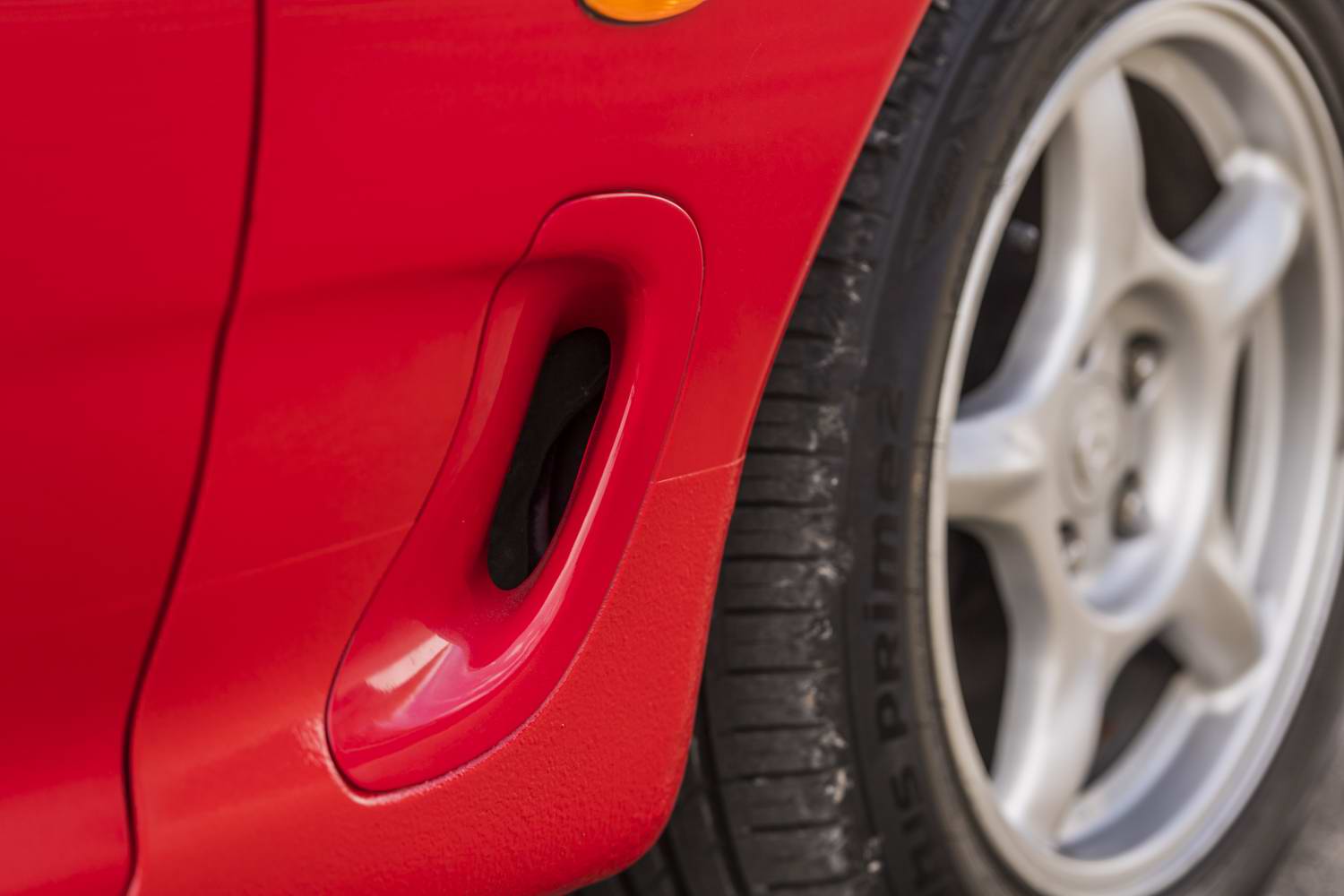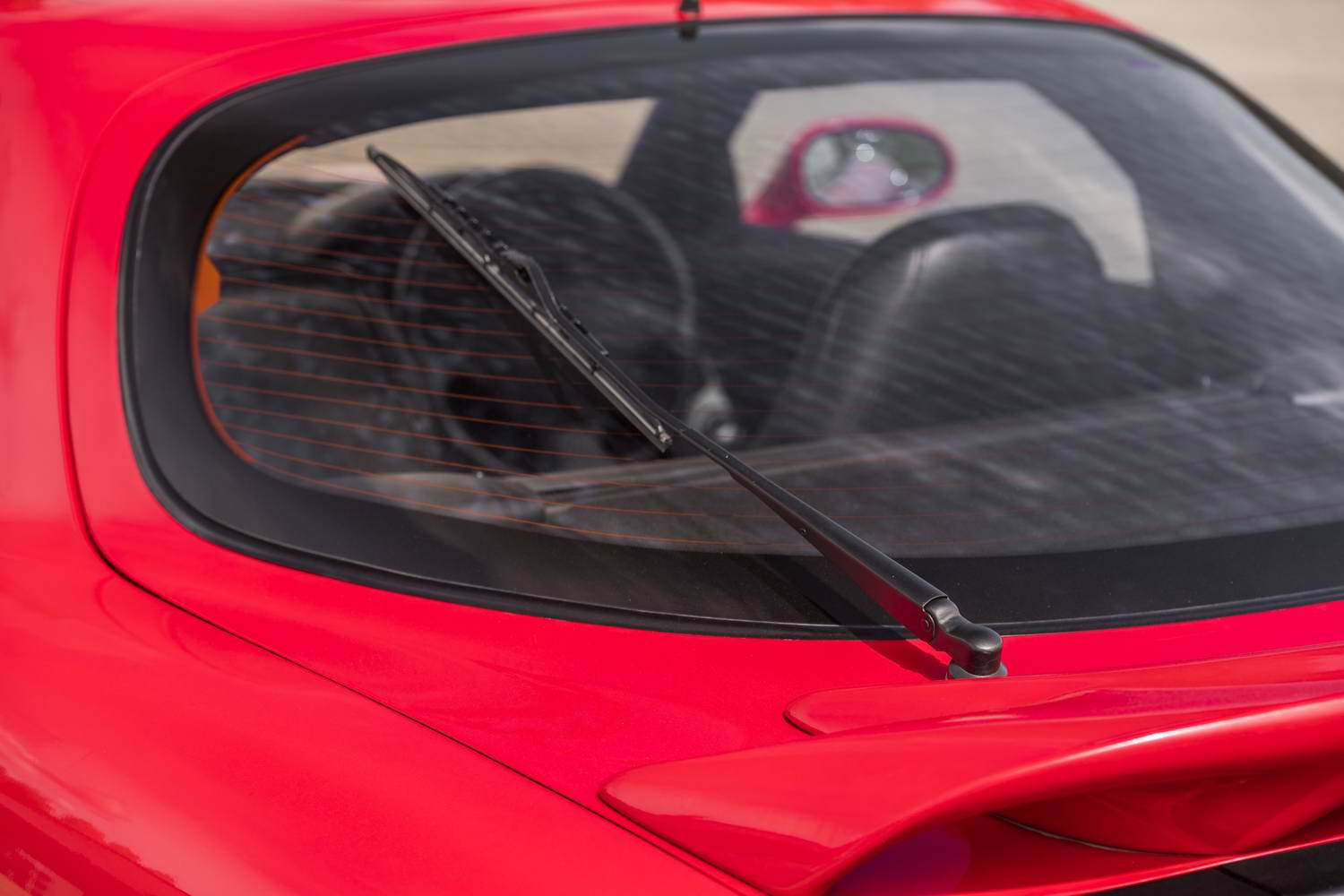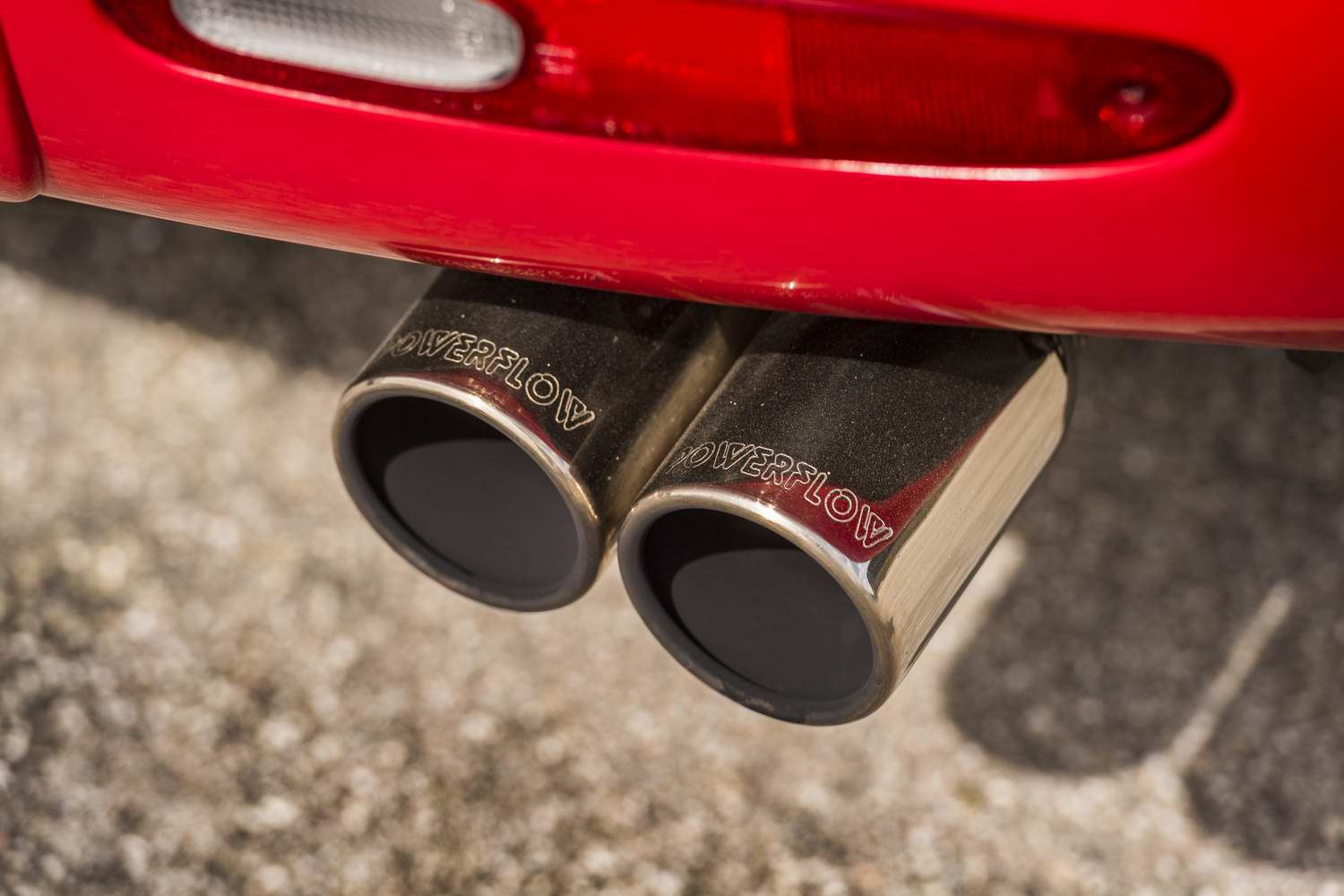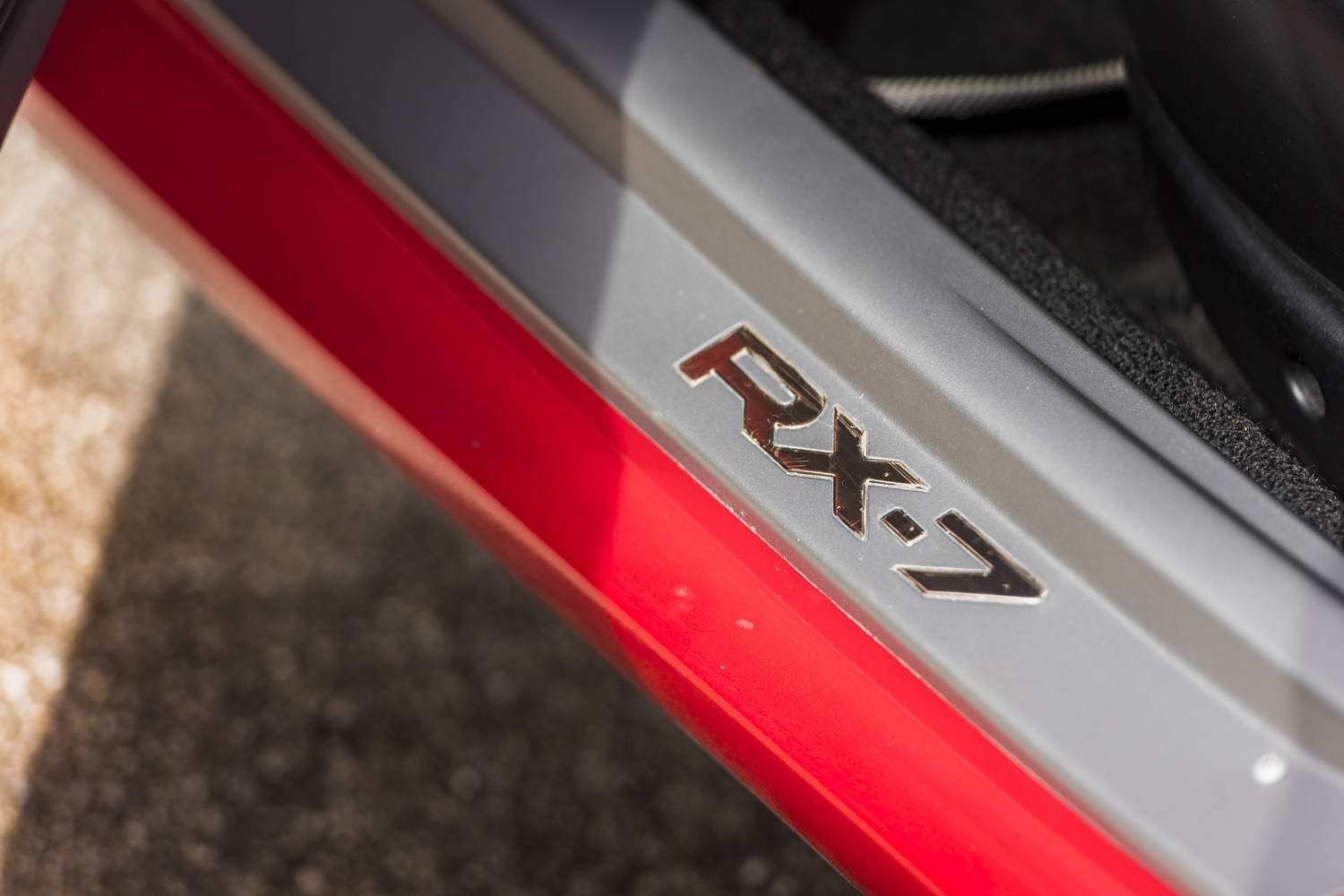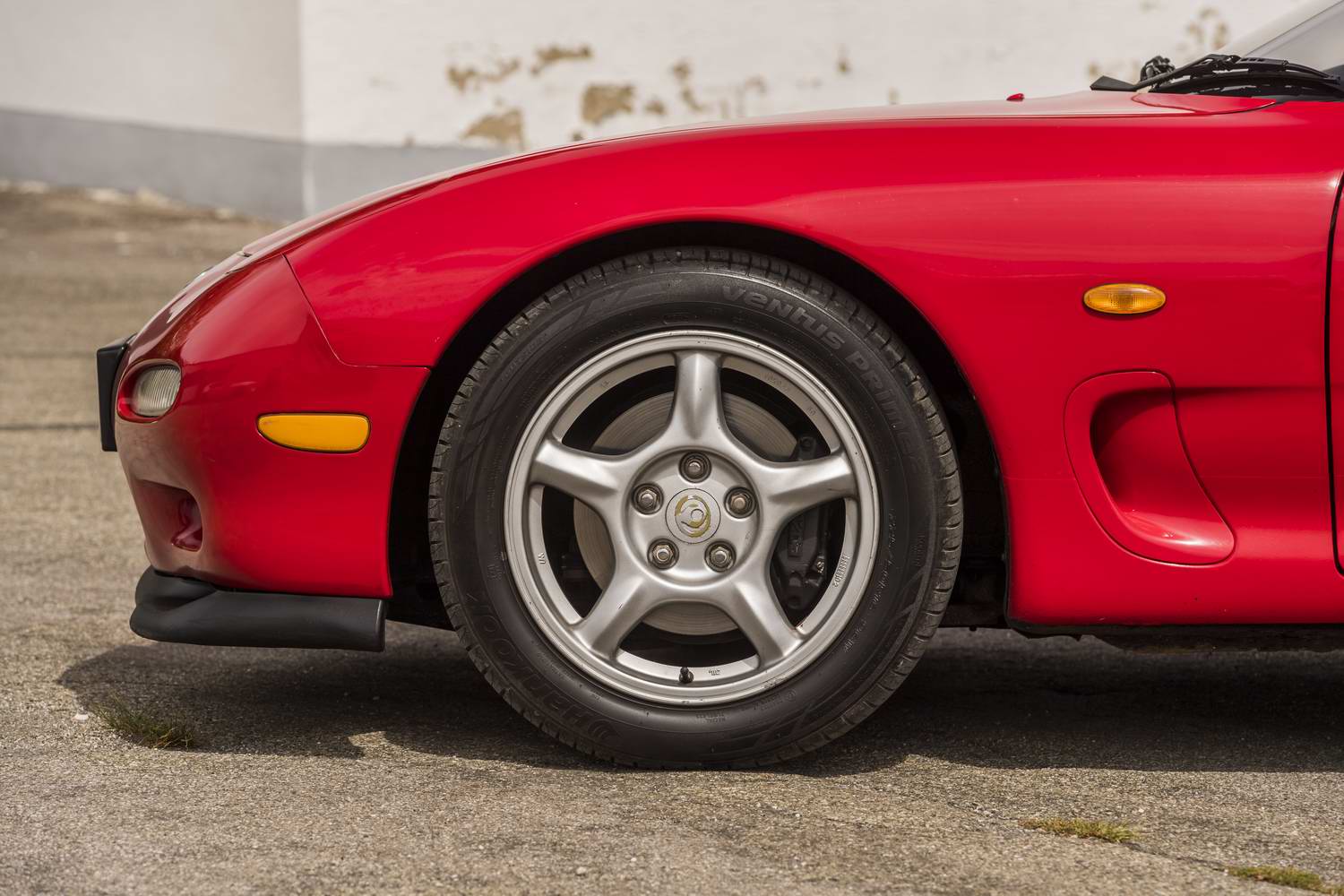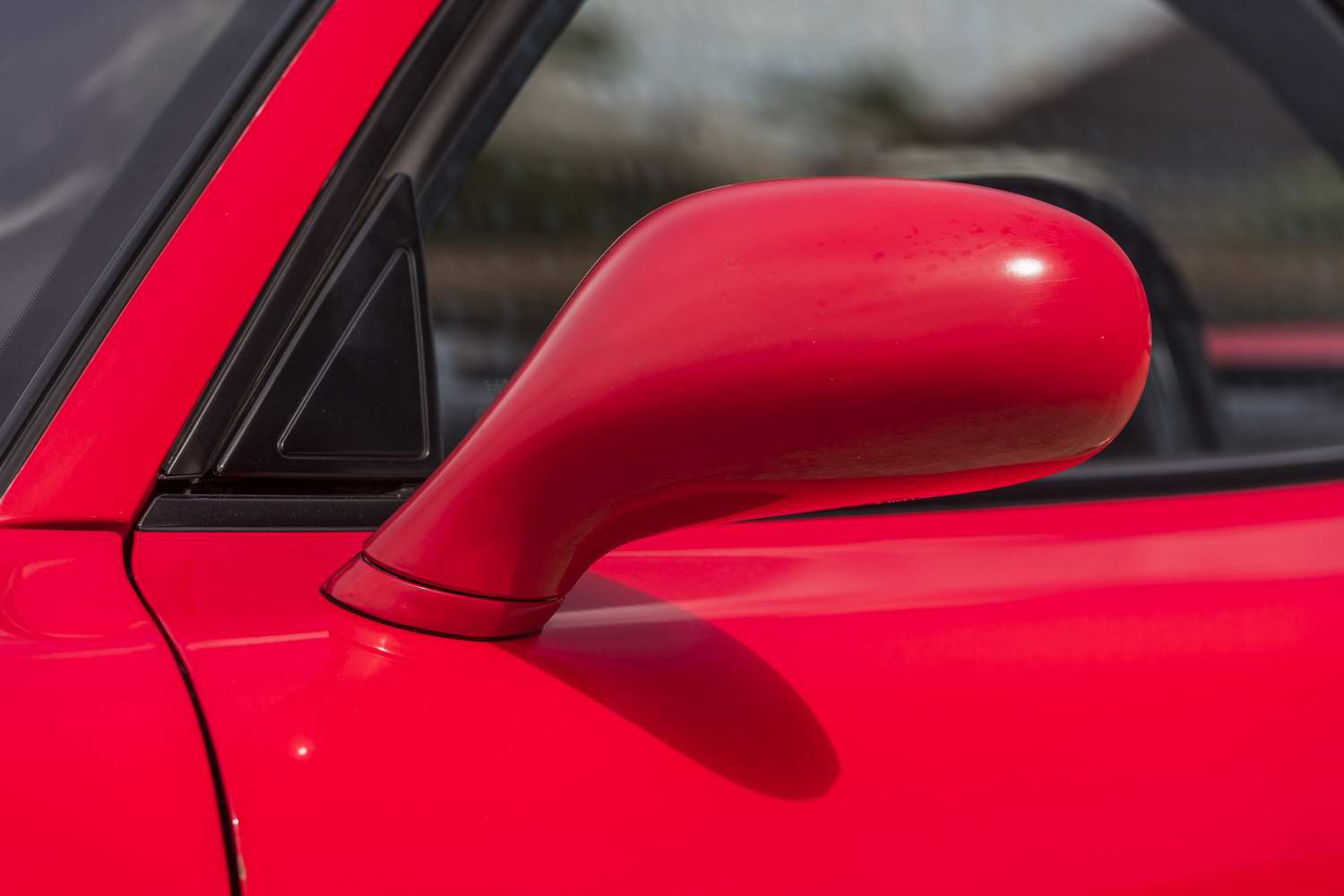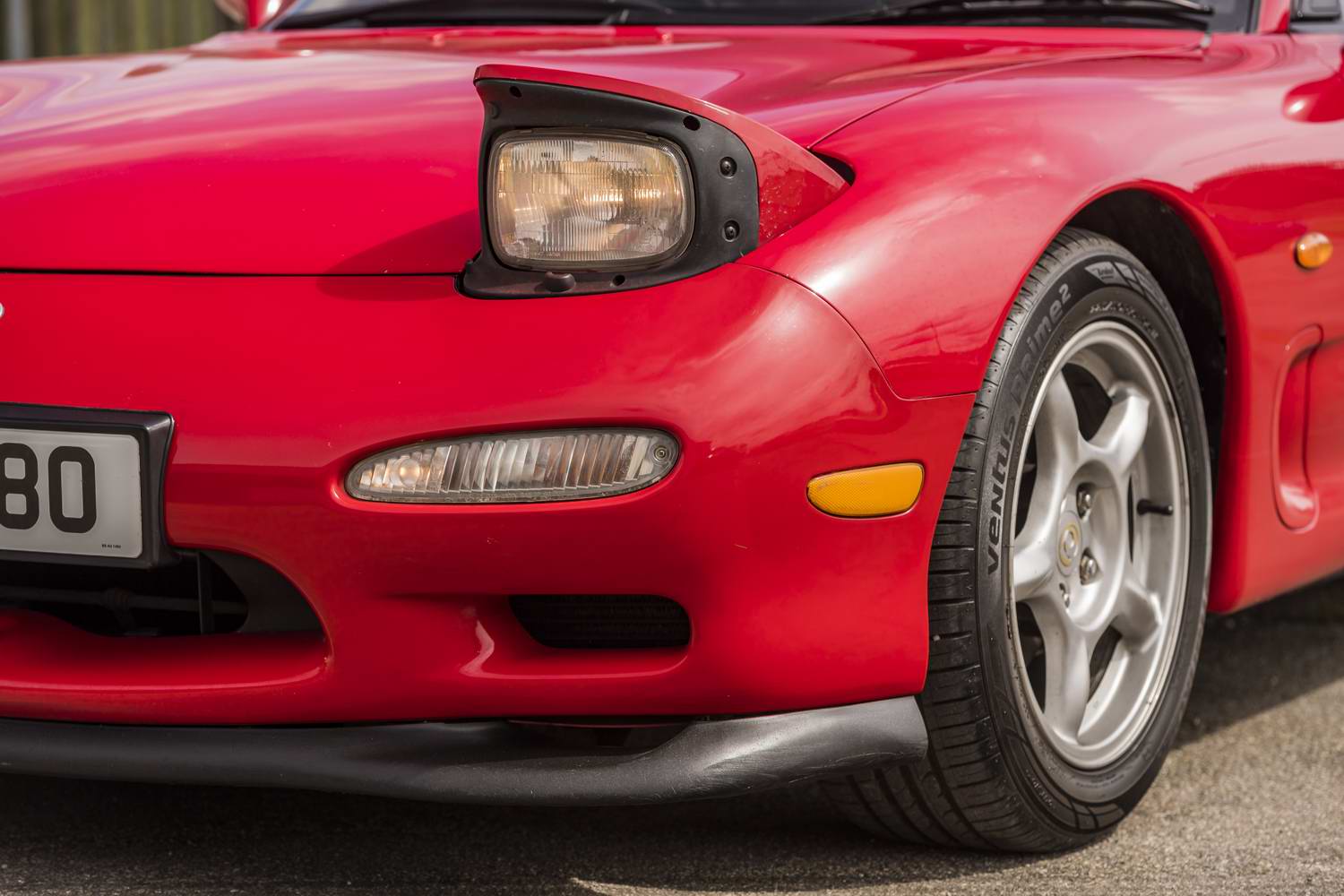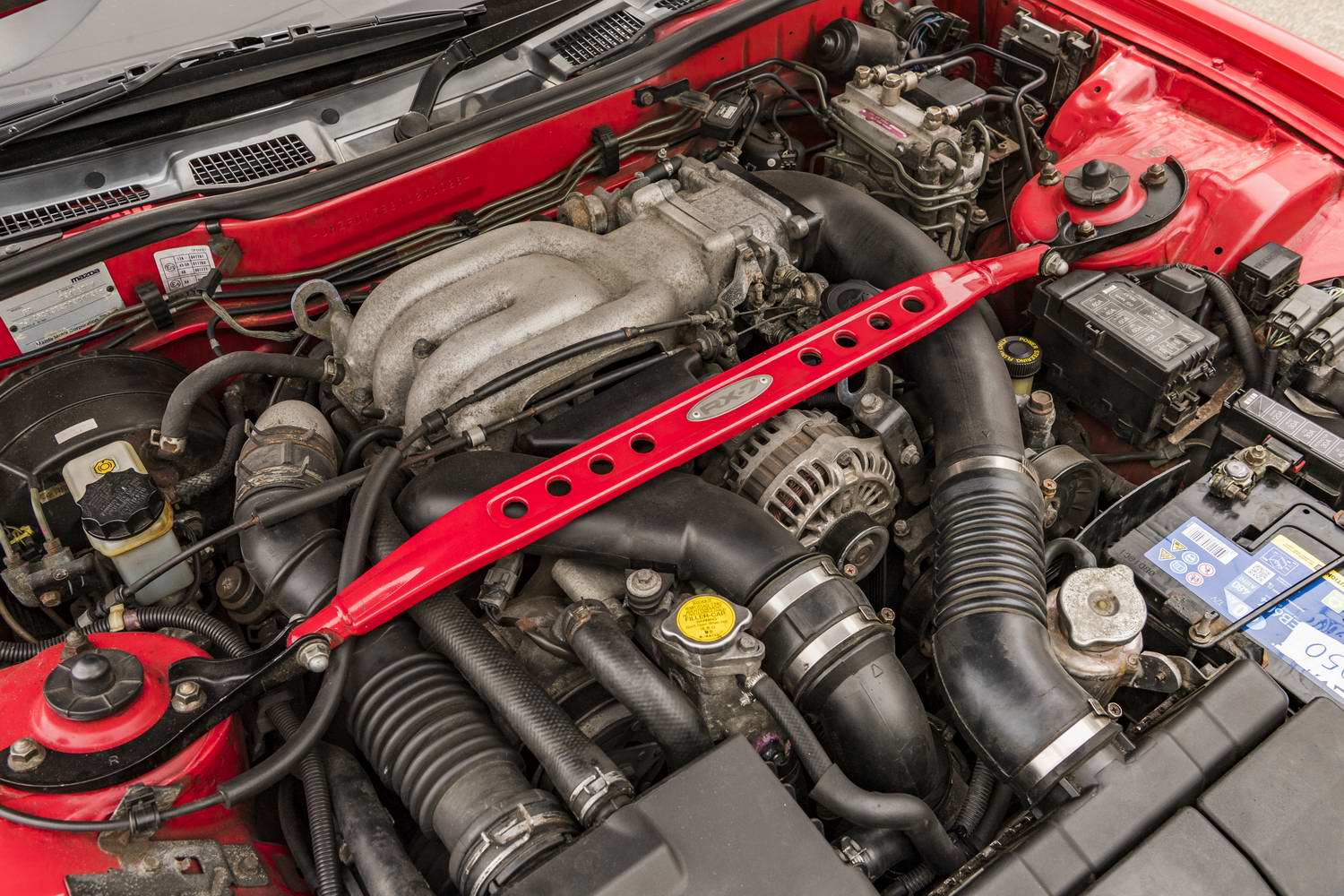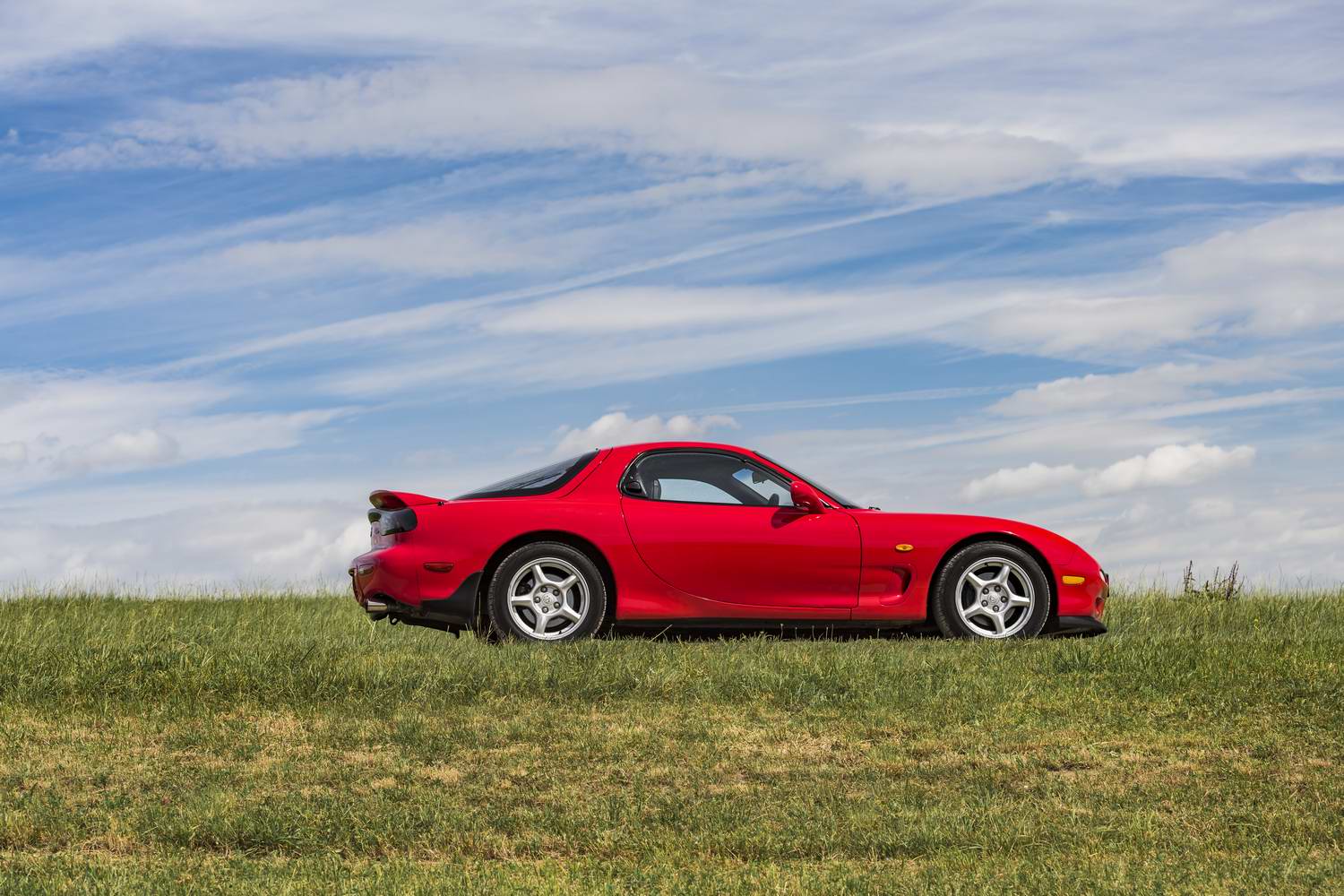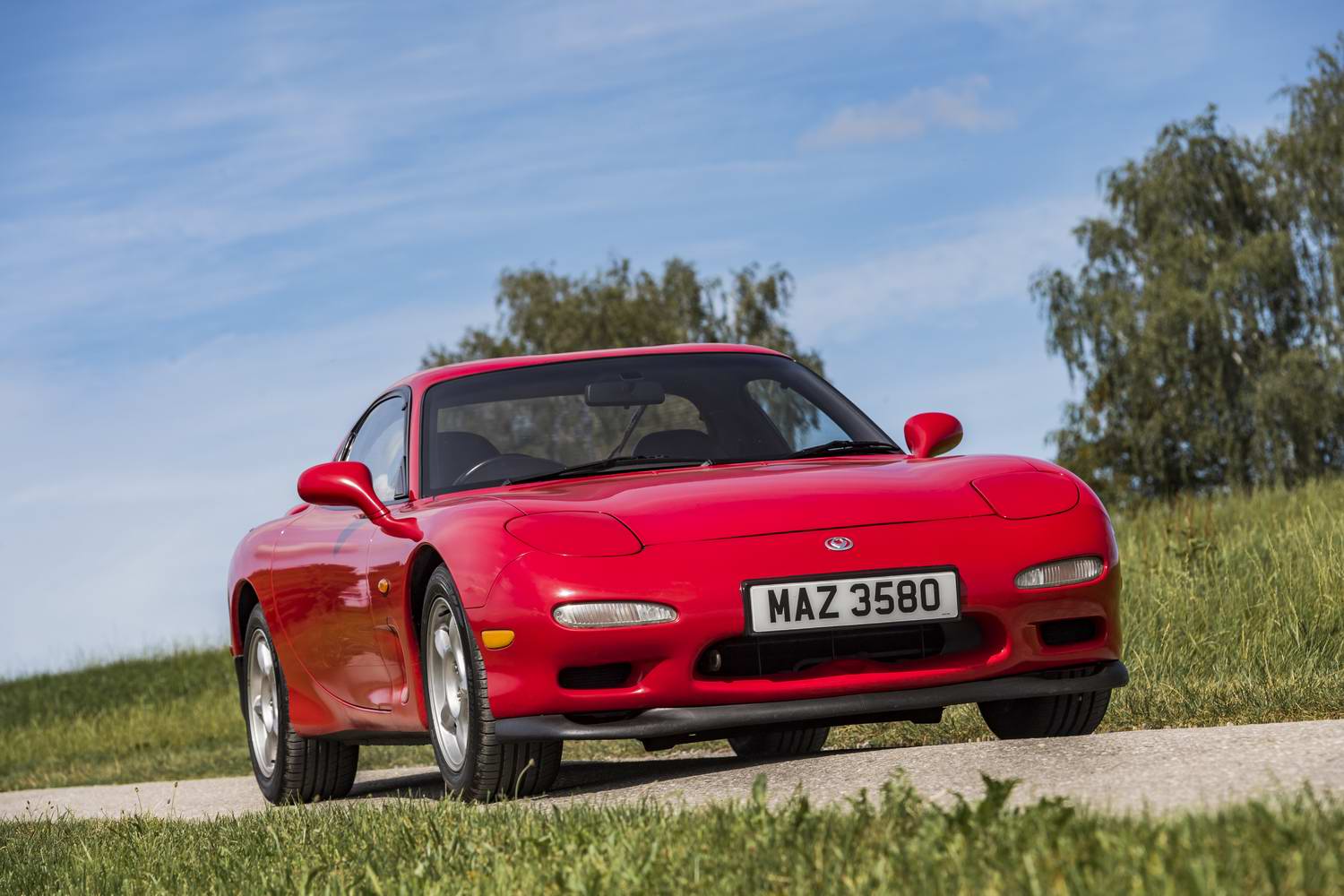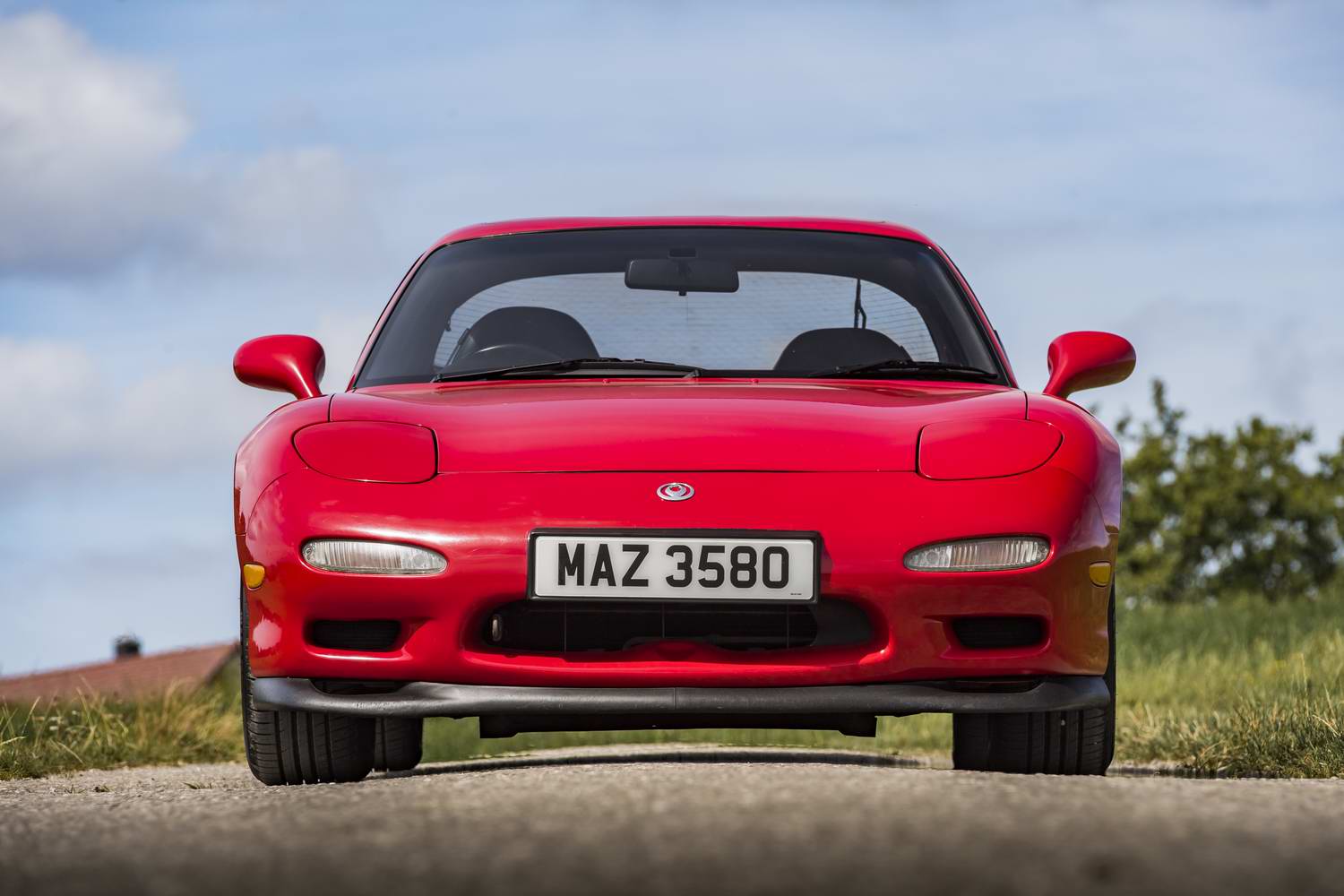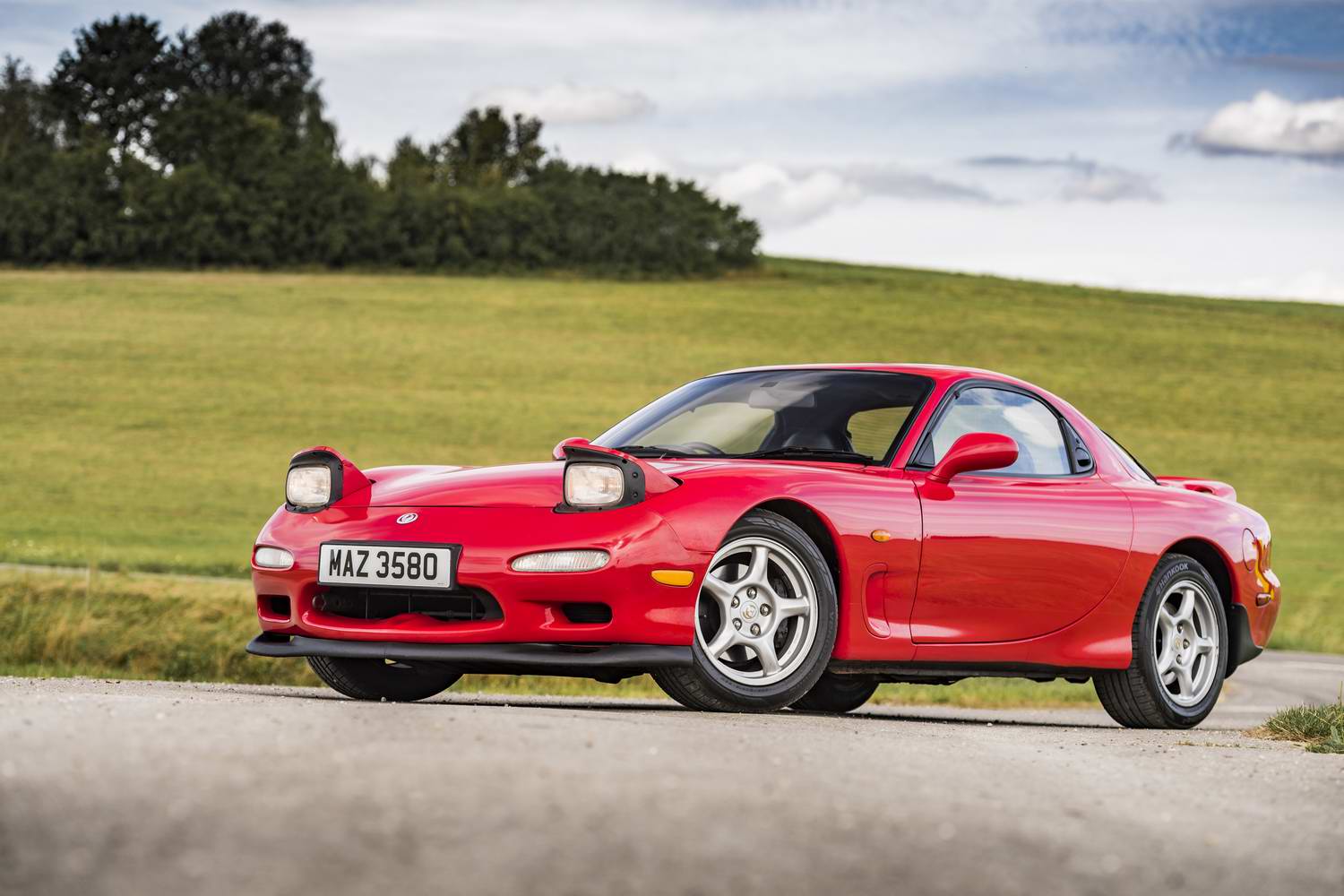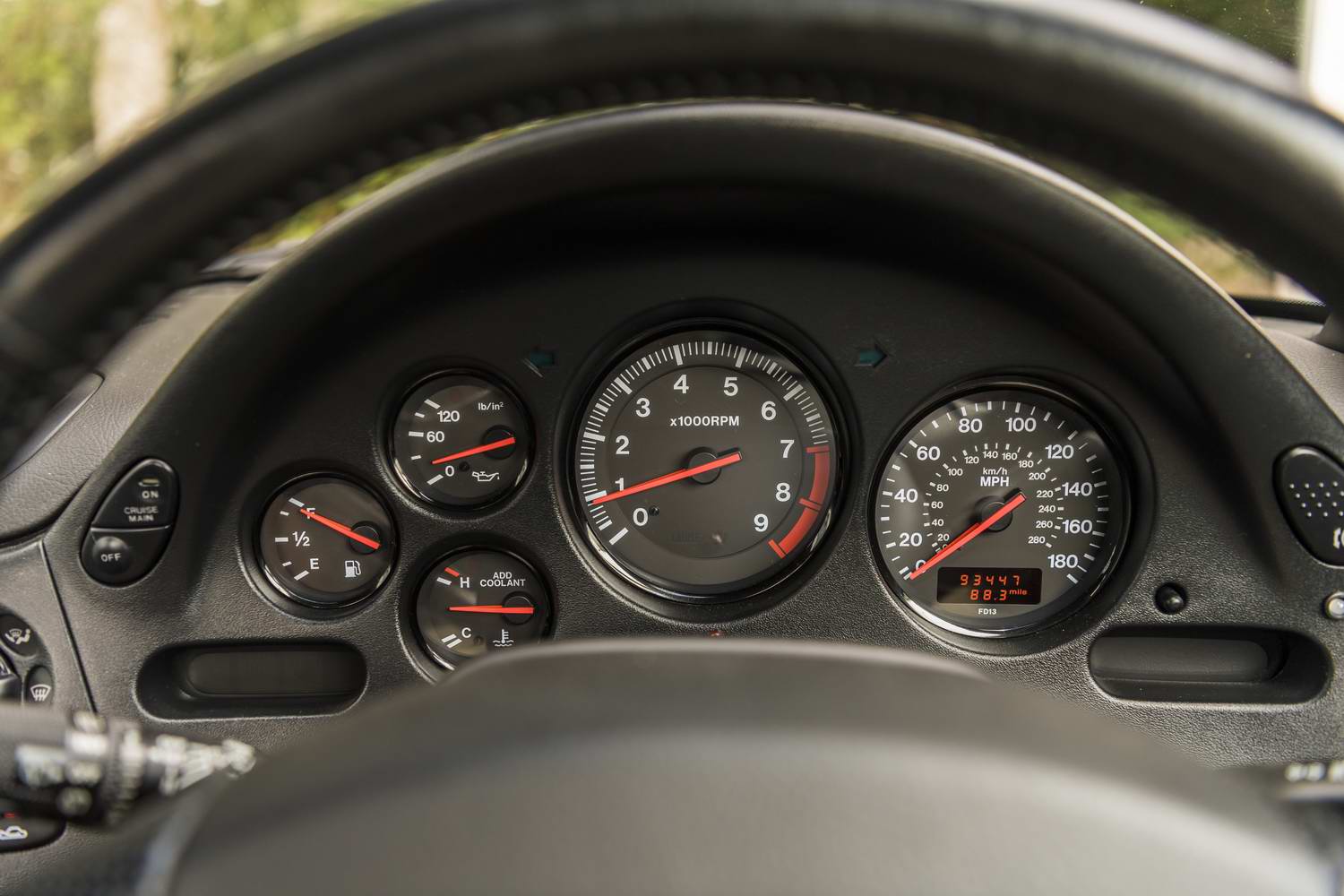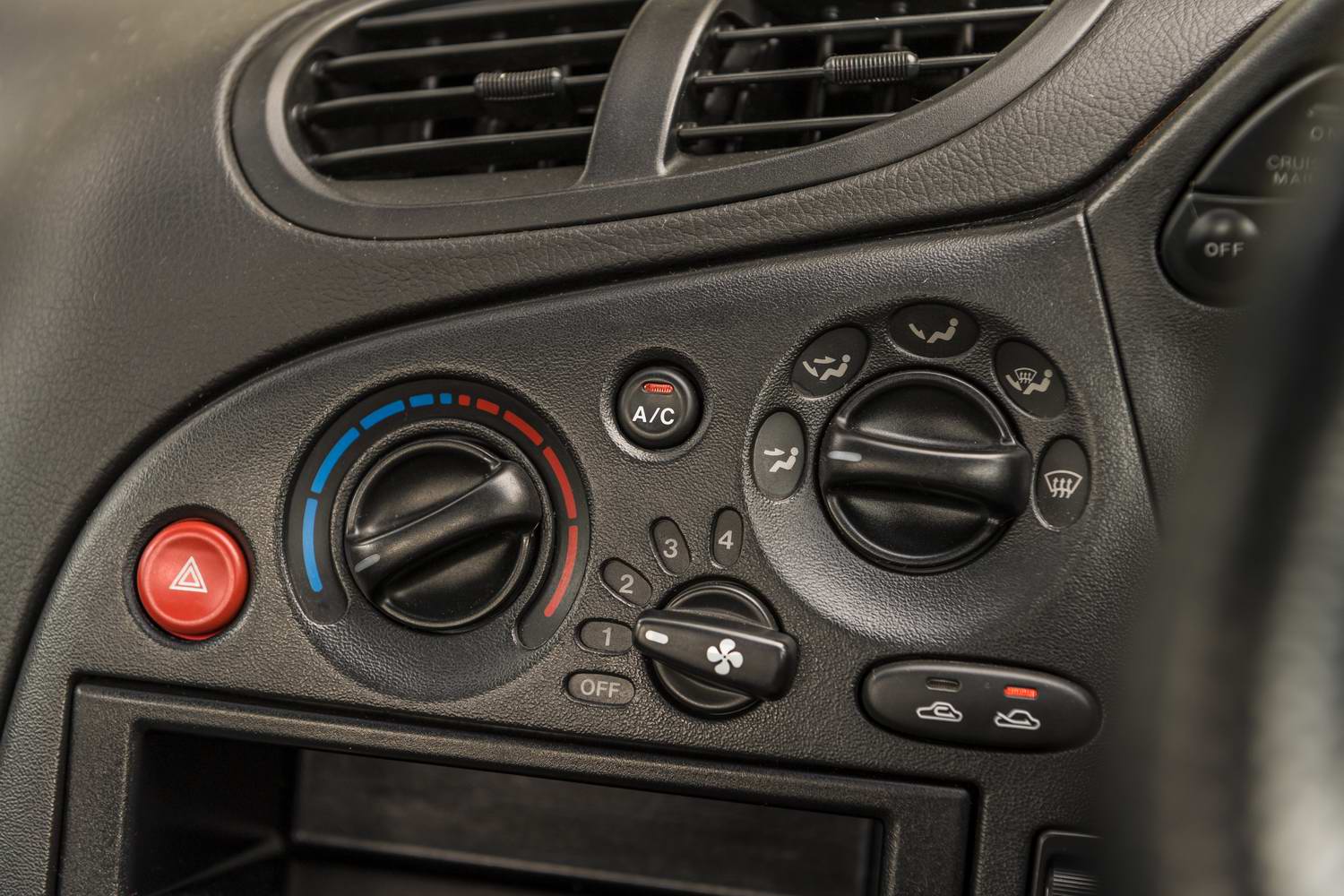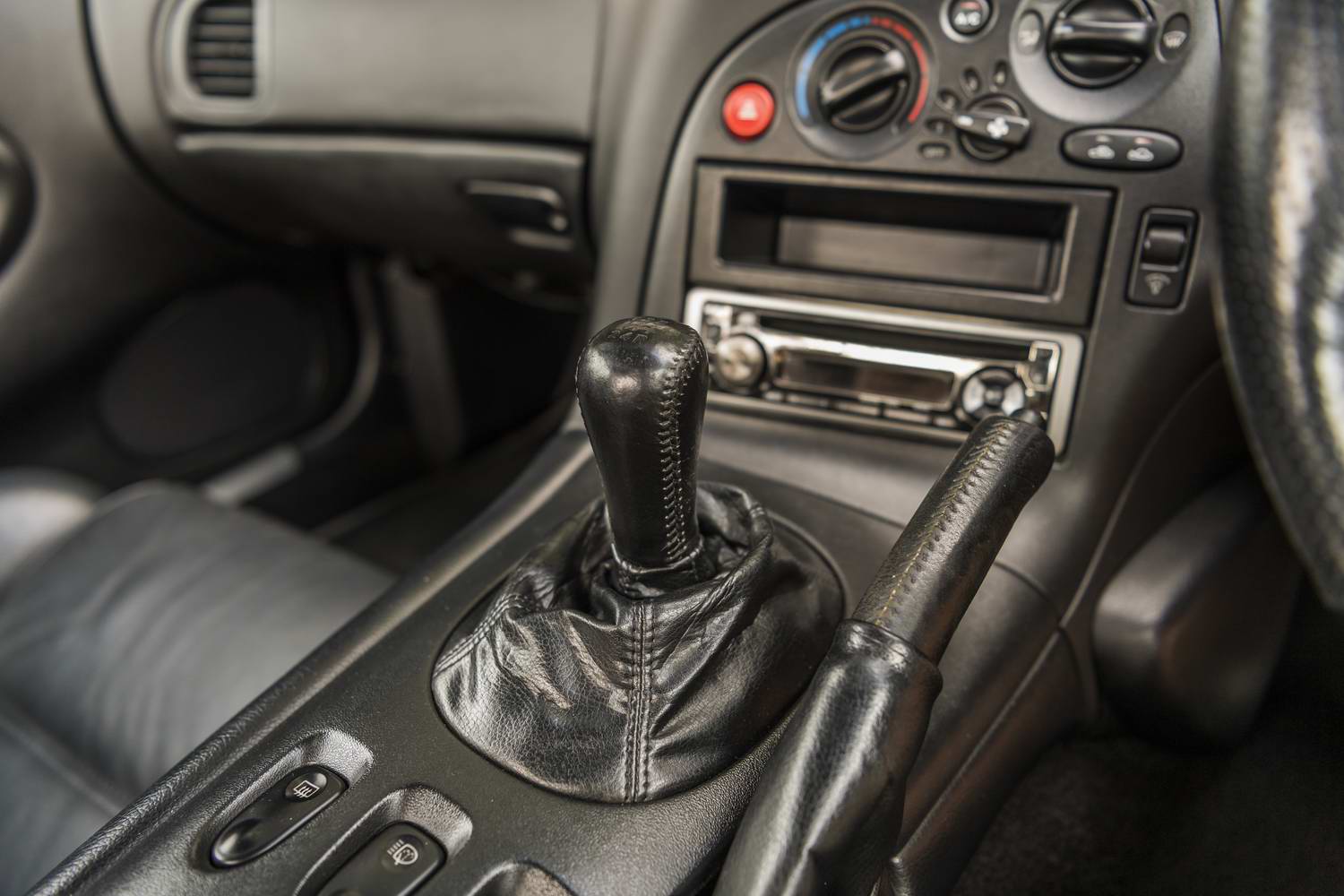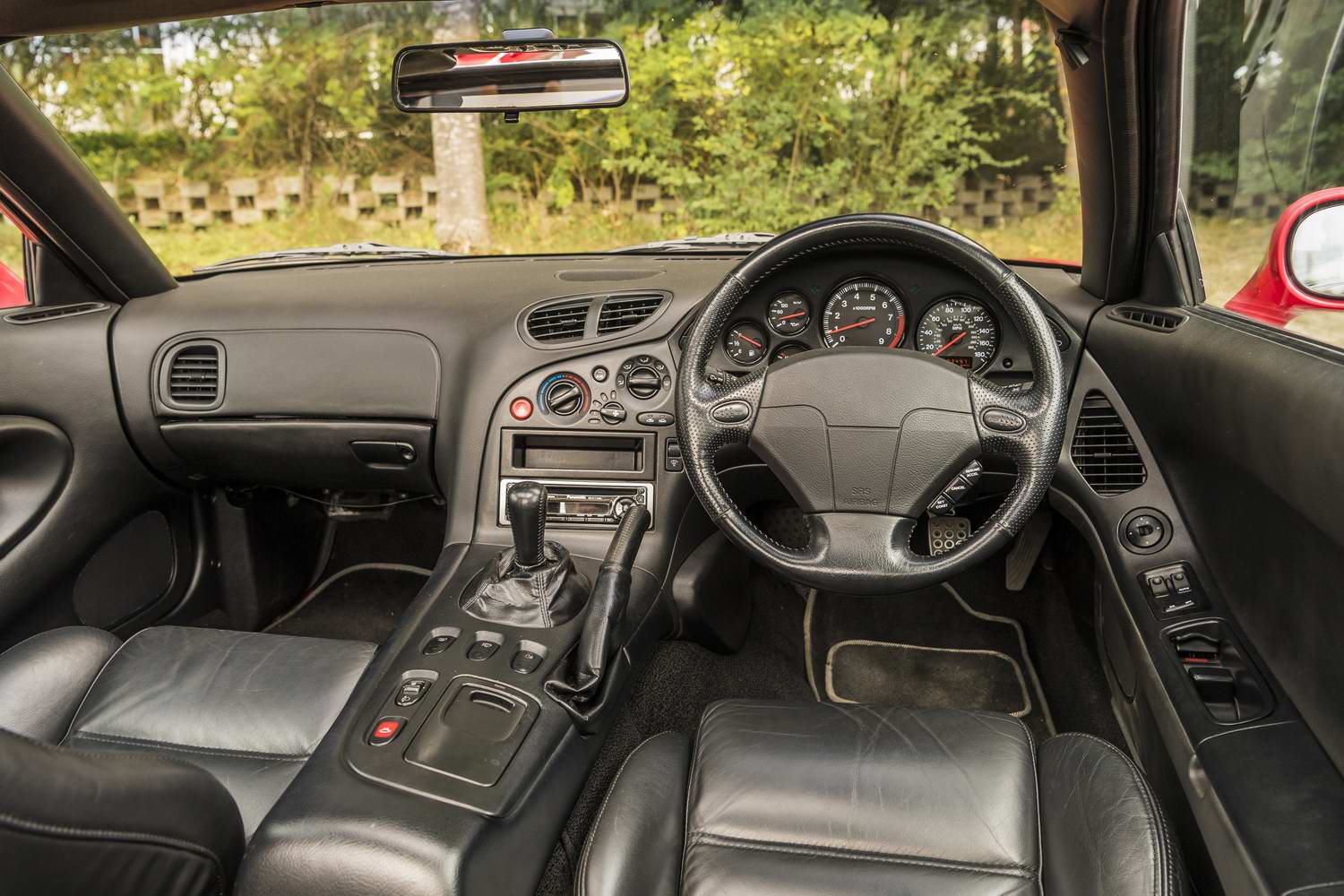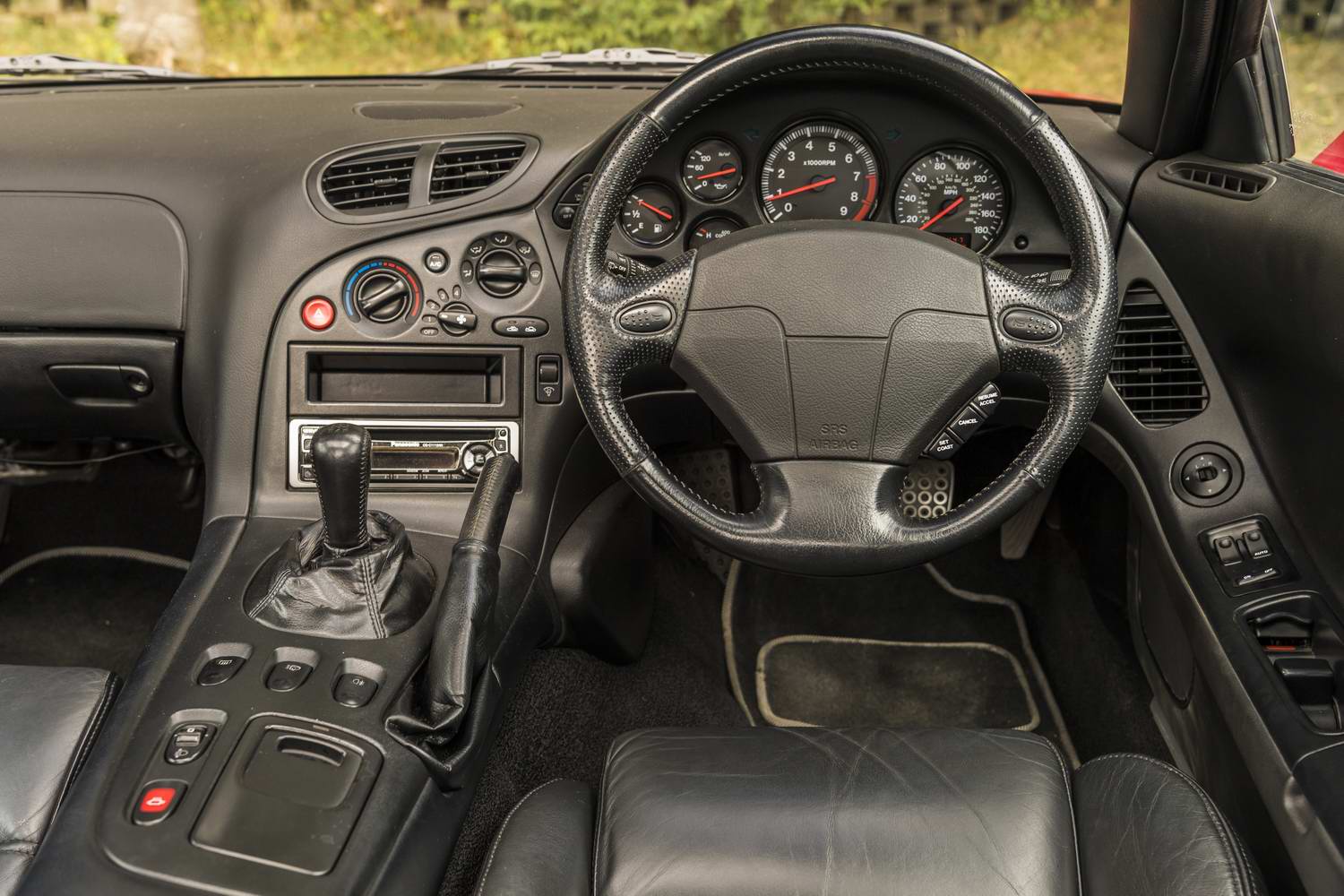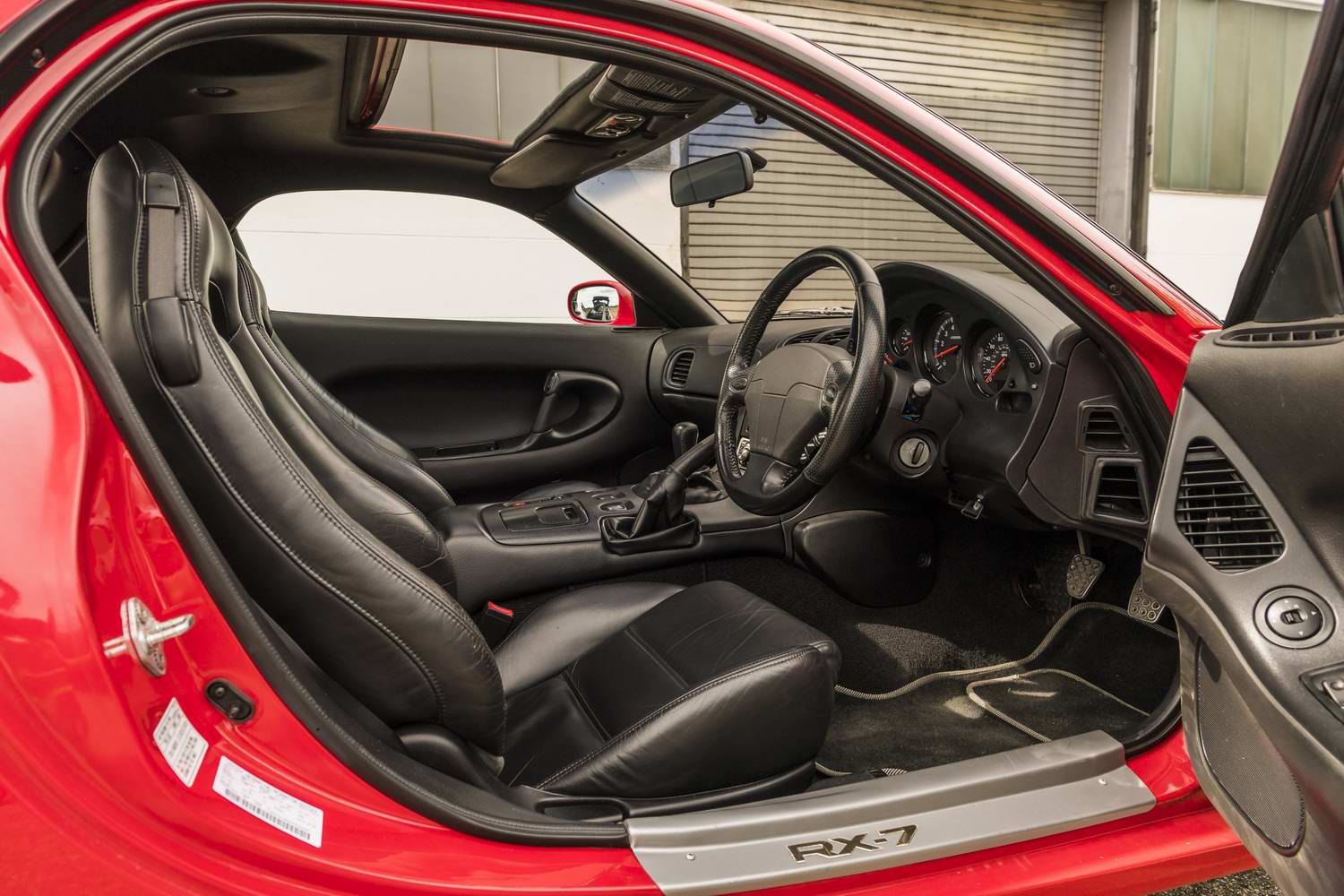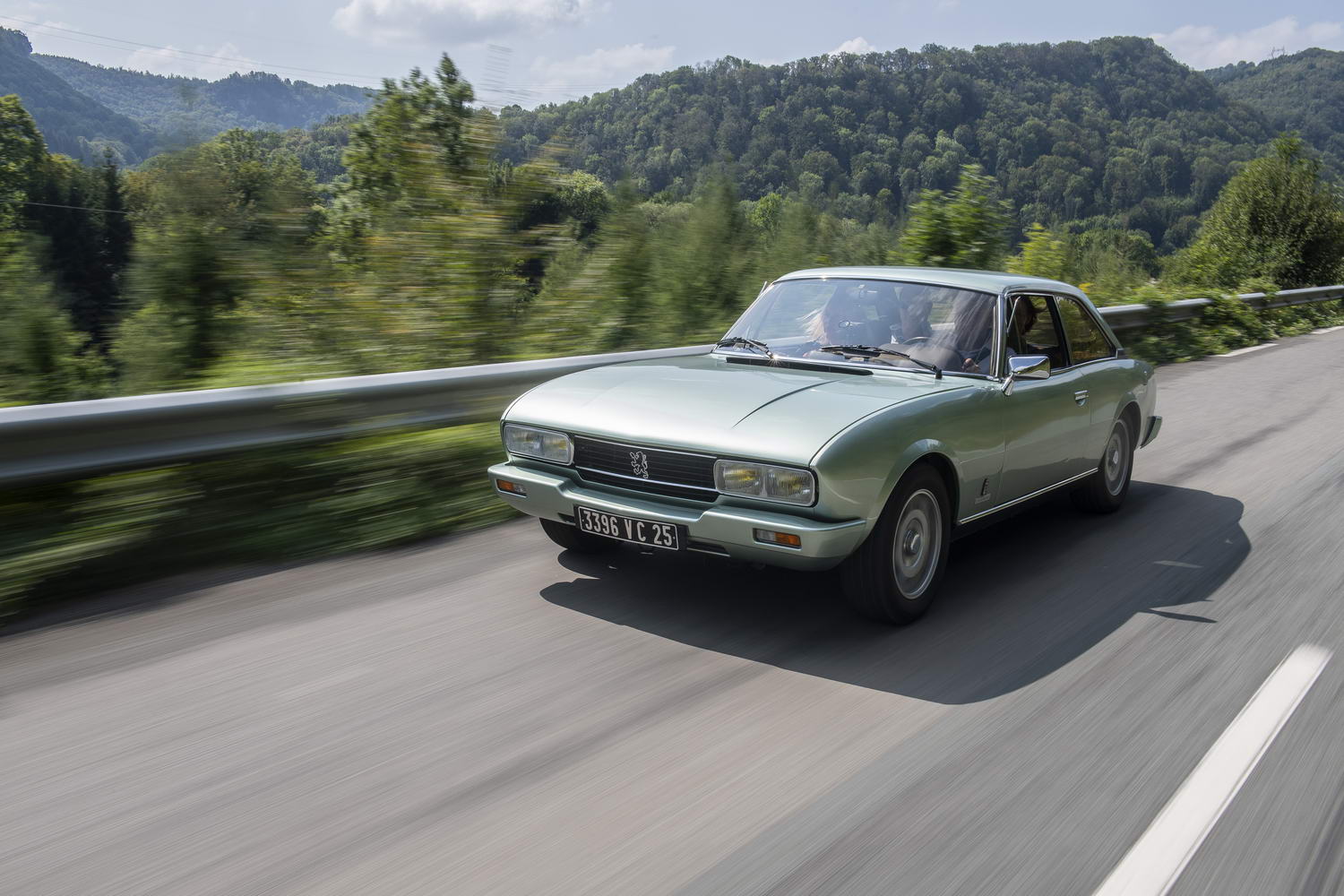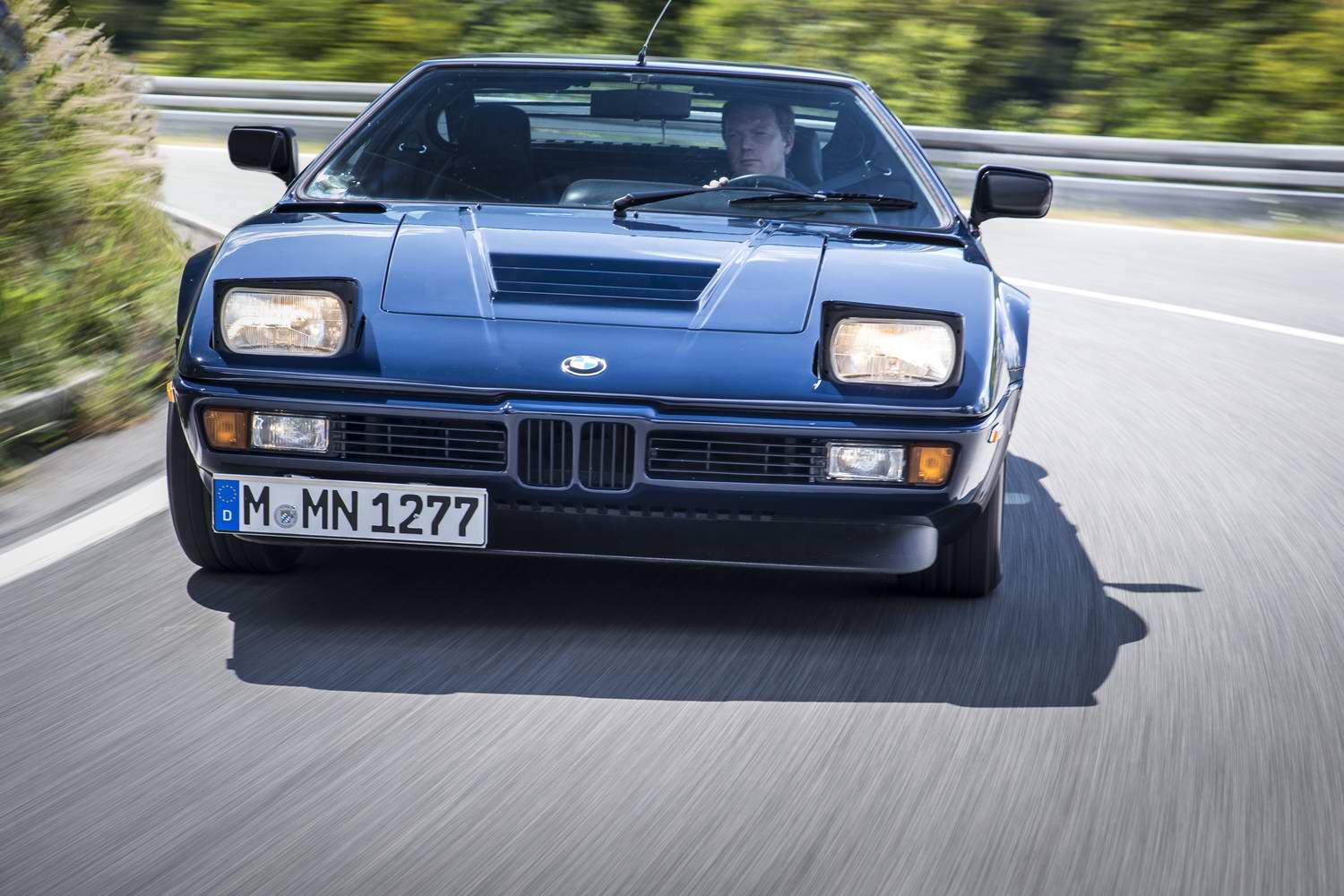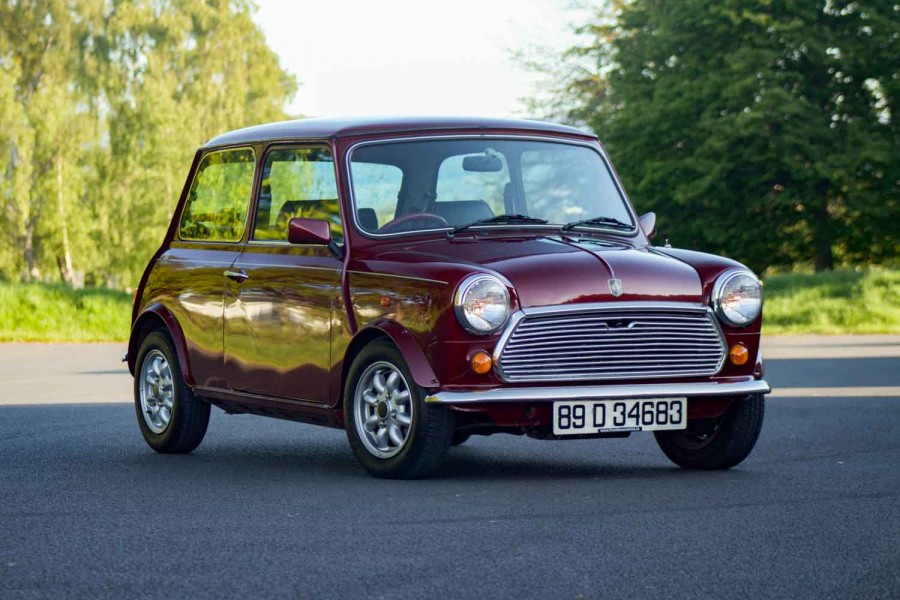What are you driving?
The gloriously attractive third-generation Mazda RX-7, often referred to by its development codename of 'FD3' (technically, it's FD3S, but we'll stick with the accepted S-less vernacular from now on). We need not really explain it too much, especially not if you're of the Gran Turismo generation, and are therefore people who will have gone through adolescence and into early adulthood enjoying this offbeat sports car's glittering reputation as a PlayStation driving-sim icon.
The thing is, if you're into cars and old enough to remember the '90s, then you should have already adored the RX-7 anyway, long before you fired up the original version of Polyphony Digital's masterpiece and saw there were endless JDM versions of the FD3 to purchase, upgrade and then race (against dim-witted AI competitors, but we digress). That is, if you weren't drooling over the curvaceous form of the FD3 in the first place.
The RX-7 is from that wonderful Japanese era when it did battle with things like the A80 Toyota Supra, the Z32 Nissan 300ZX, the Z16A Mitsubishi 3000GT and, to a degree, the original NA1 Honda NSX, although the last of these was almost a car apart, given its mid-engined status and all that Ayrton Senna-related stuff that may or may not be urban myth. Anyway, the RX-7 more than held its own in this contemporary company, mainly because it had pop-up headlights (always a winner in our book, and both the Mitsubishi and the Honda had the same feature themselves), but, perhaps more pertinently to Mazda, it was powered by a rotary engine. This is Mazda's calling card: it's an internal combustion engine that has no reciprocating pistons in it, instead using one or more 'triangular' rotors within a chamber to deliver its power. This unusual layout has many benefits, such as incredible smoothness with minimal vibration, a more even delivery of torque across the rev range and also the ability to develop a set amount of horsepower from a far more compact, smaller and lighter unit than a conventional petrol engine of the same rating, but on the flip side rotary engines were also known for unreliability and excessive fuel and oil usage.
Mazda alone continued with rotary power, long after every other company gave them up as a bad job, but as the Hiroshima company was the first Japanese manufacturer to succeed at Le Mans with the outstanding, magical and downright phenomenal 787B quad-rotor Group C sports prototype racer in 1991, maybe the third-generation RX-7 - released the year after that marvellous motorsport success in France - was onto something that other carmakers simply didn't recognise at the time.
Name its best bits
The outlier engine takes some beating. Say what you like about wearing rotor tips and excessive oil consumption and the need to rev the nuts off of it to get the best performance; when you've experienced a Mazda rotary engine spinning up to its redline in its fantastic, eerie and preternaturally smooth fashion, you'll be completely seduced by the idea of 'no pistons, please'. People often refer to cultured piston engines (like the famous old Lexus V8 on which you could place a coin edgeways and it would stay standing even when the car was idling) as 'turbine-like', but they are as nothing compared to the glassiness of a 13B twin-rotor. It's a glory. It also sounds fabulous, albeit like no other internal combustion engine you'll be used to; there's an almost-digital buzz to it, that builds to a wailing crescendo as you approach the point of shifting up.
And, when it comes to changing gears, this five-speed unit shows that Mazda has always been gifted when it comes to making ultra-precise, deeply satisfying shift actions. It clicks through the gate in a smarter, more tactile way than many a transmission from the end of the decade just gone and, as a result of this and also the responsiveness of the 13B engine, plus perfect placement of the pedals, heel-and-toe downshifts are an unmitigated delight.
In fact, in engineering terms the RX-7 is a gem. The brakes, so often a glaringly obvious weak point on older cars, are lovely, progressive and communicative, while the steering is well-weighted and accurate. Perhaps the biggest surprise (or should we say treat?) is that the FD3 is a remarkably supple car. As one of that wave of mid-90s Japanese coupes with comfortably 200hp-plus, we were expecting it to ride rather firmly and feel a touch too intense at lower road speeds, but that most emphatically is not the case with the Mazda. It's just beautiful for rolling refinement - cruising along, the ride comfort is extraordinary, so it conducts itself rather like a mini-GT, but even when you up the pace the Mazda is softly-sprung and glorious in the corners, rather than skittish and stiff. This fluidity in the suspension makes it a devastatingly quick car on the right road because it will keep as much of its tyres' contact patches in touch with the asphalt at all times, maximising grip and traction to the utmost.
Oh, and before we move on, did we say the RX-7 FD3 is jaw-droppingly pretty? We did? Well, we'll say it again. Look at it. Time has only improved what was already one of the best designs ever to come out of Japan and while some sneering, contemporary critics back in the day called it nothing more than a copy of the Porsche 944, we think the Mazda has always been better to behold than the German car and the ageing process has only widened the aesthetic gap between them in favour of the RX-7. Perhaps its best trick is that it looks big, grand and imposing, when it is physically anything but - at 4,295mm long, 1,760mm wide and a race-car-like 1,230mm tall, this is a compact coupe that has wonderful kerbside presence.
Anything that bugs you?
Very little, although - in an attempt not to be slavishly blinded by the purist joy of driving what is arguably a now-legendary Japanese classic - we ought to point out that the steering wheel is a rather big and cumbersome affair, while the quoted 0-100km/h time of 5.1 seconds, which is pretty searing even by today's standards and which must have been devastating 26 years ago, feels like it is somewhat optimistic, given the way the RX-7 actually accelerates. Still, neither of these is a major gripe and both of them can easily be remedied with some tasteful, thoughtful tuning...
And why have you given it this rating?
Once NSU died a death, Mazda was the last great bastion of the rotary engine, persevering with the highly intriguing but regrettably flawed technology long after every other manufacturer had simply gone with a good old crank-and-pistons set-up. So, to drive one of the last Mazda rotaries, and one that has such a devoted following among the petrolhead cognoscenti, was a true privilege. What was best about the RX-7 FD3, though, was that it felt so smooth, comfortable and modern in operation that the idea of living with one today is nowhere near out of the question. It's a beautiful thing to look at; it's an even more beautiful thing to drive.

